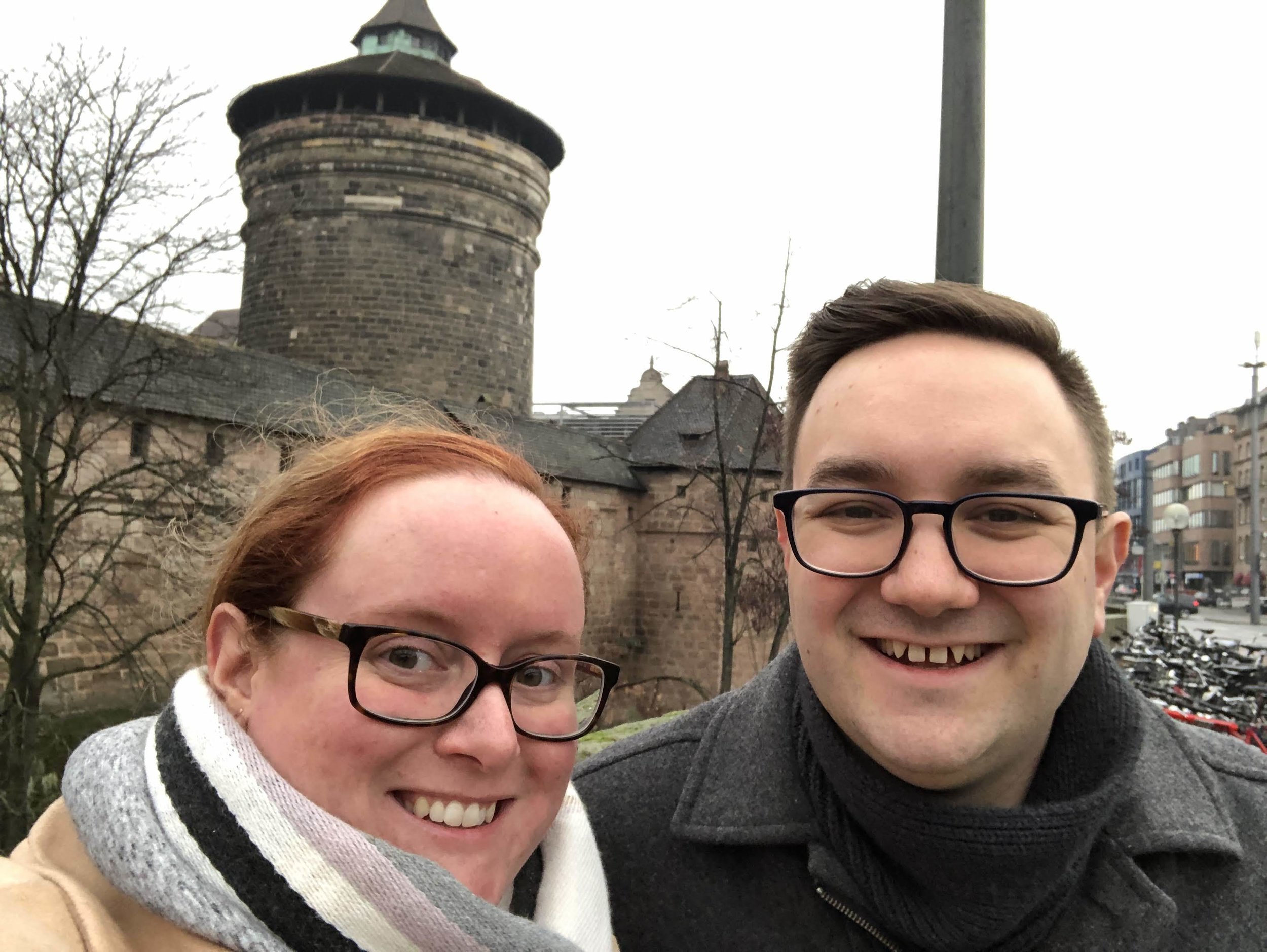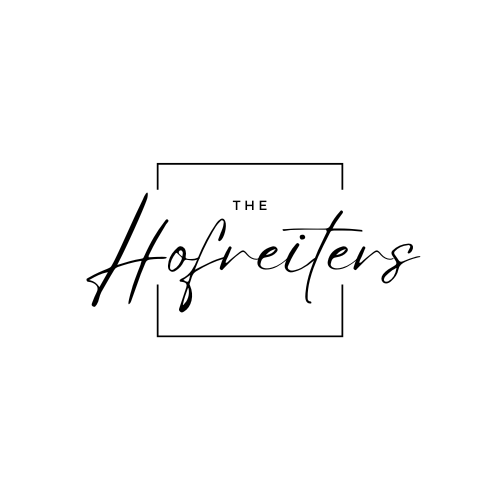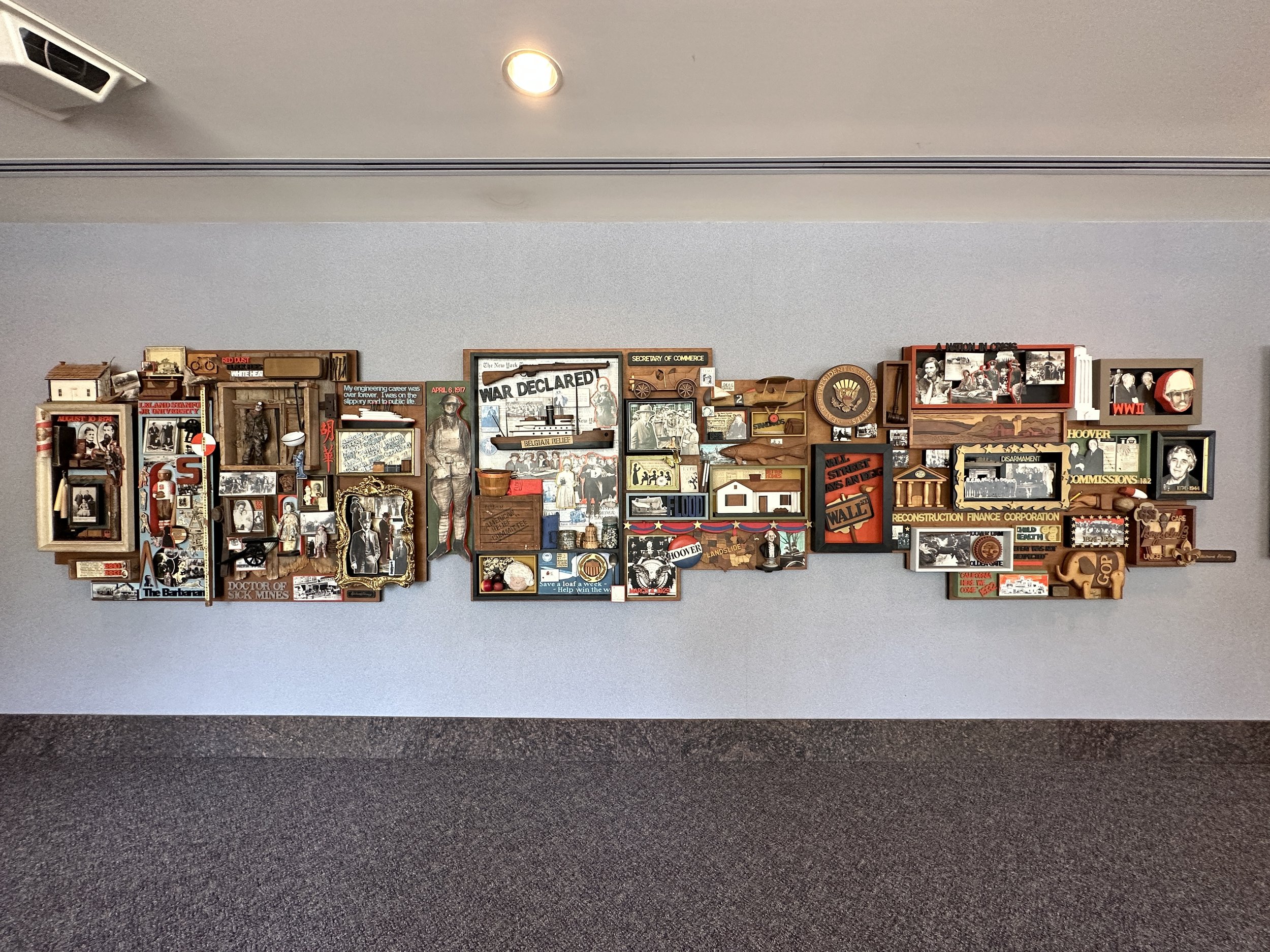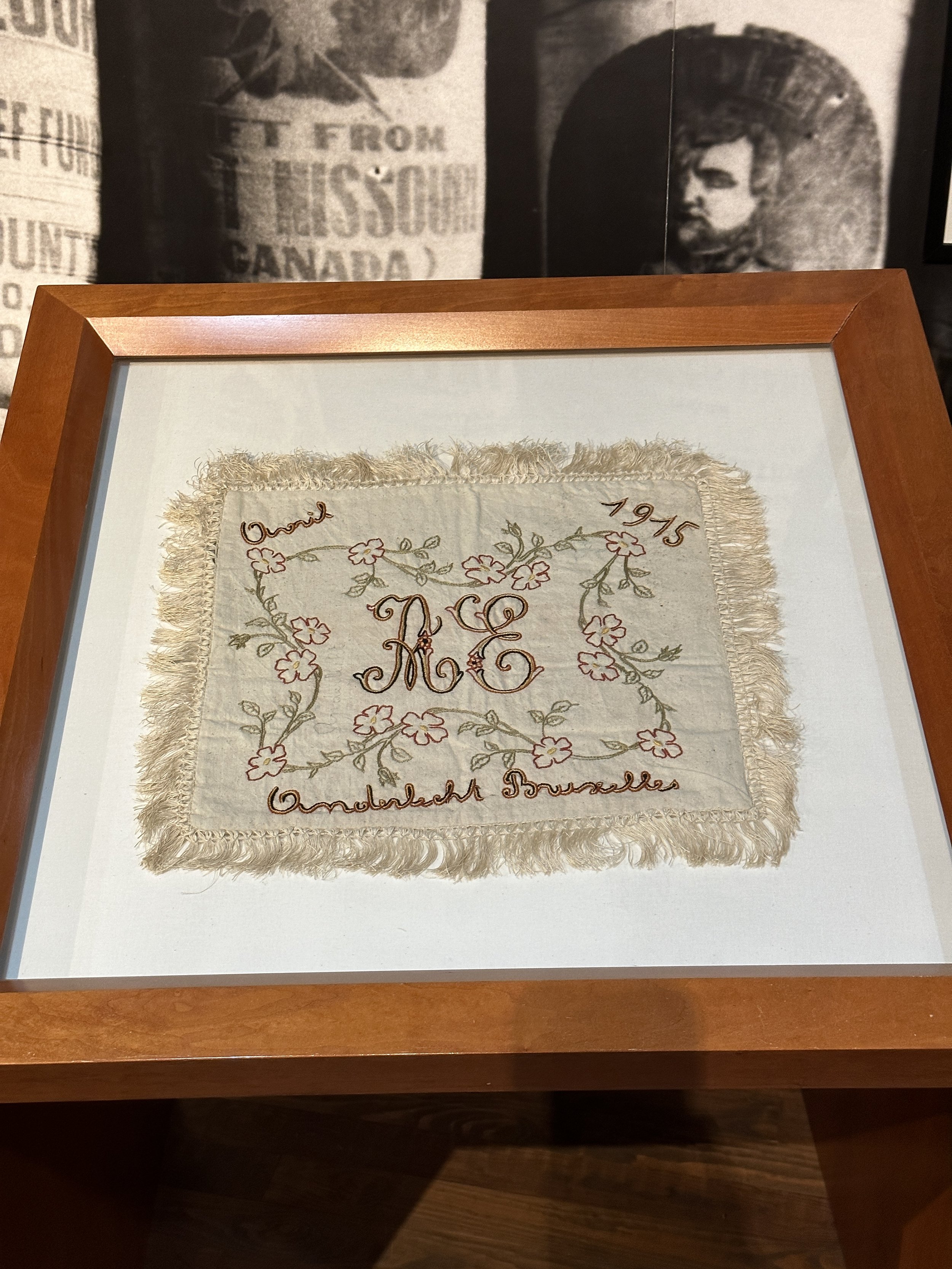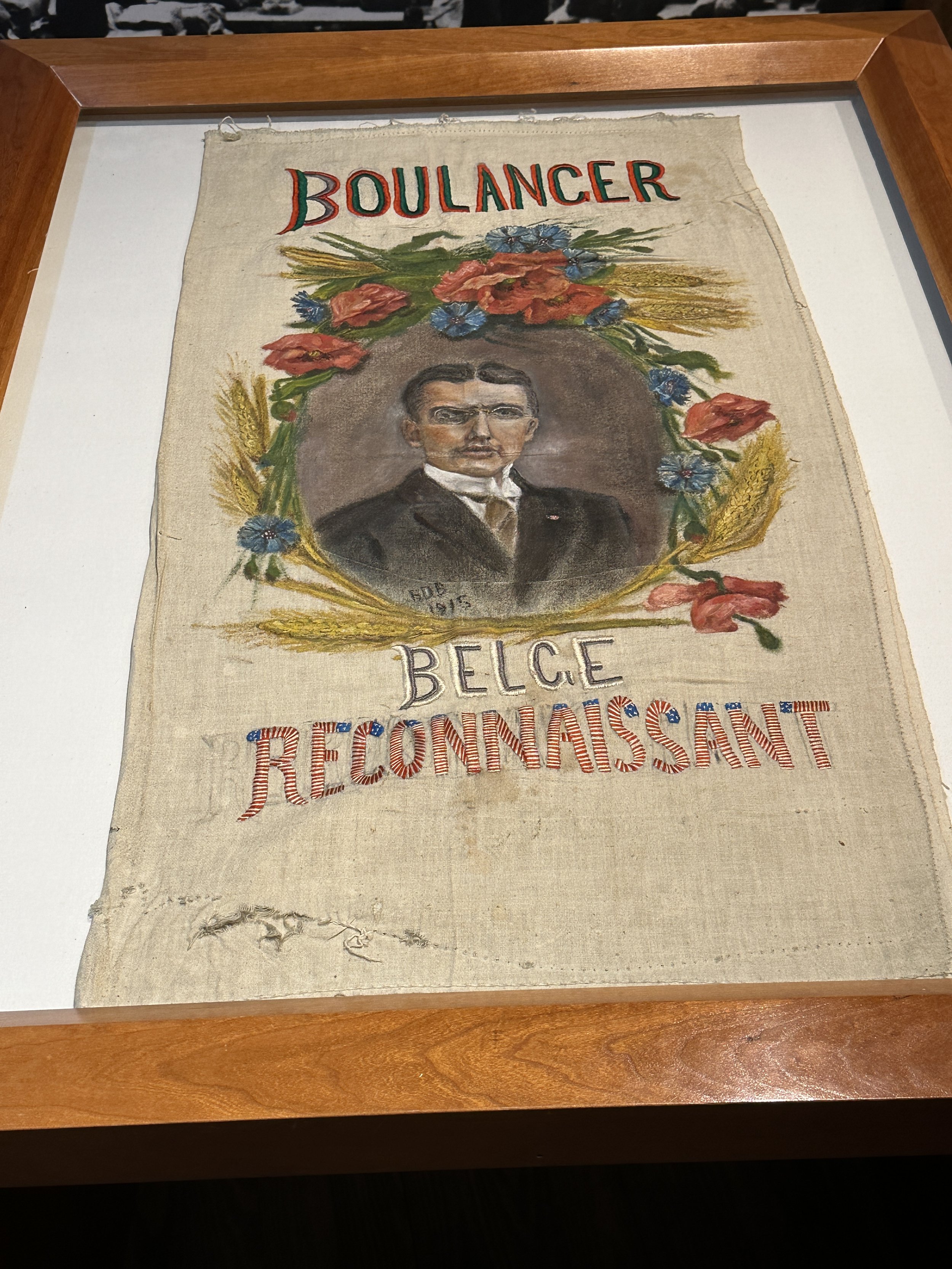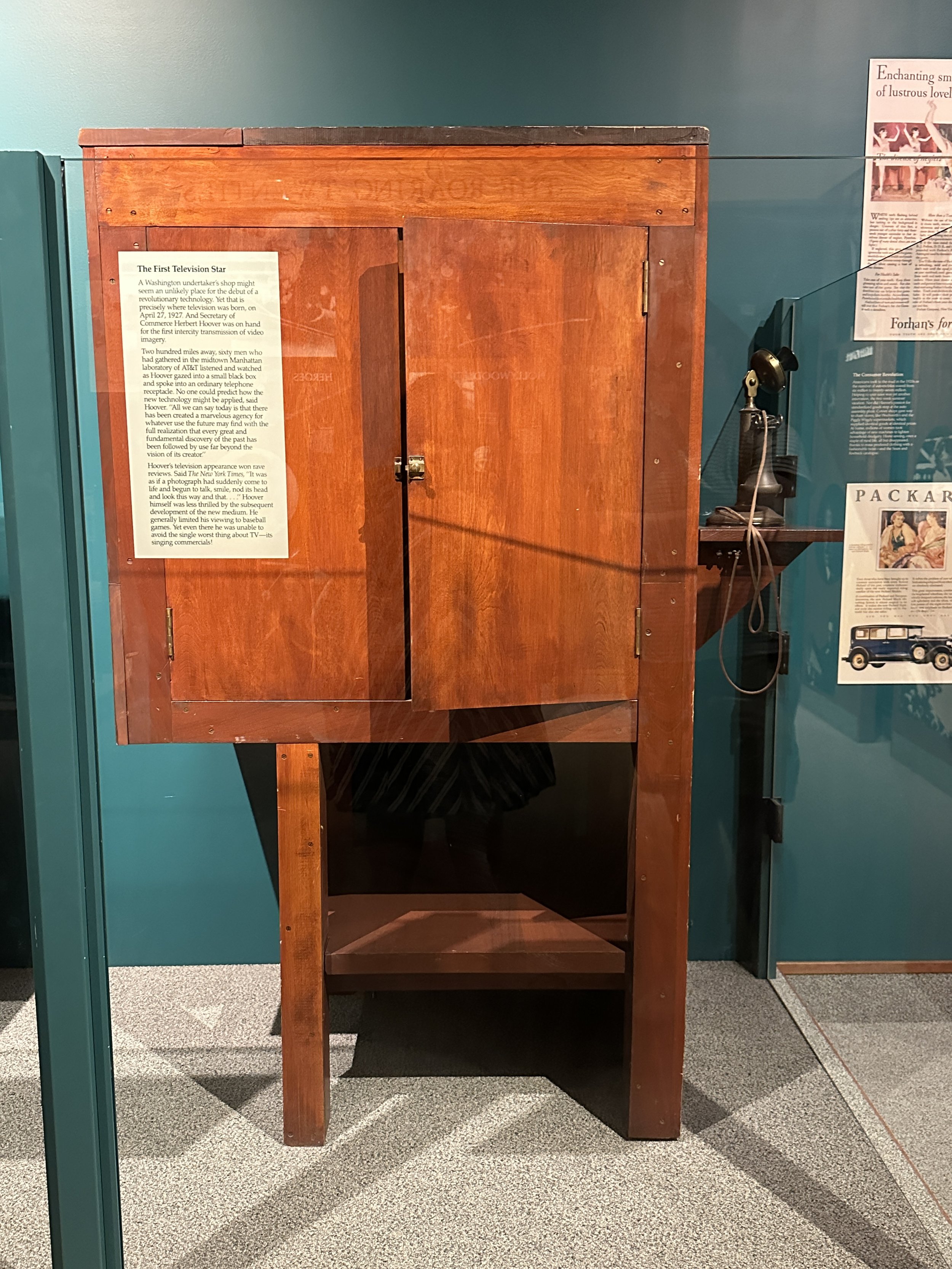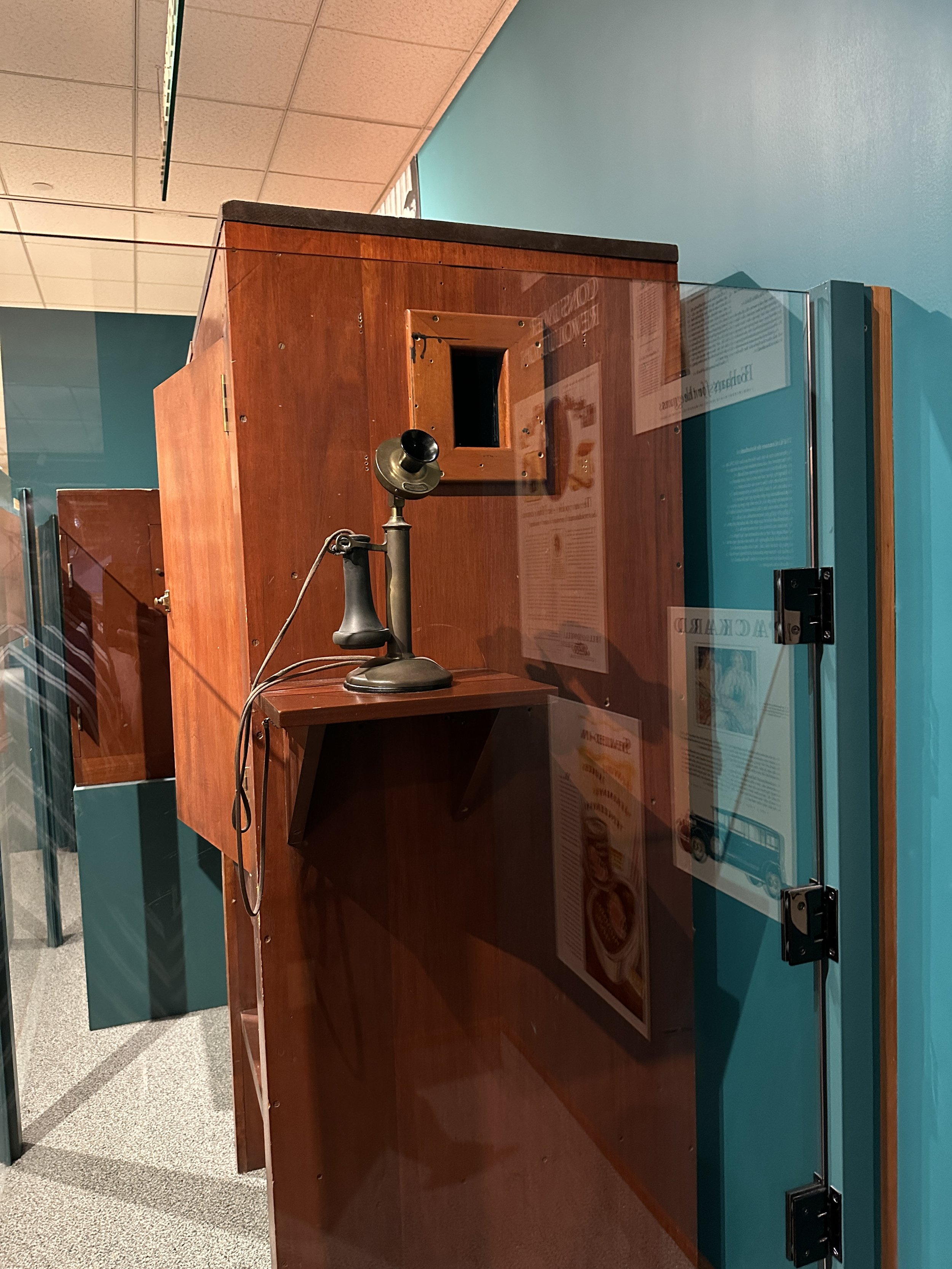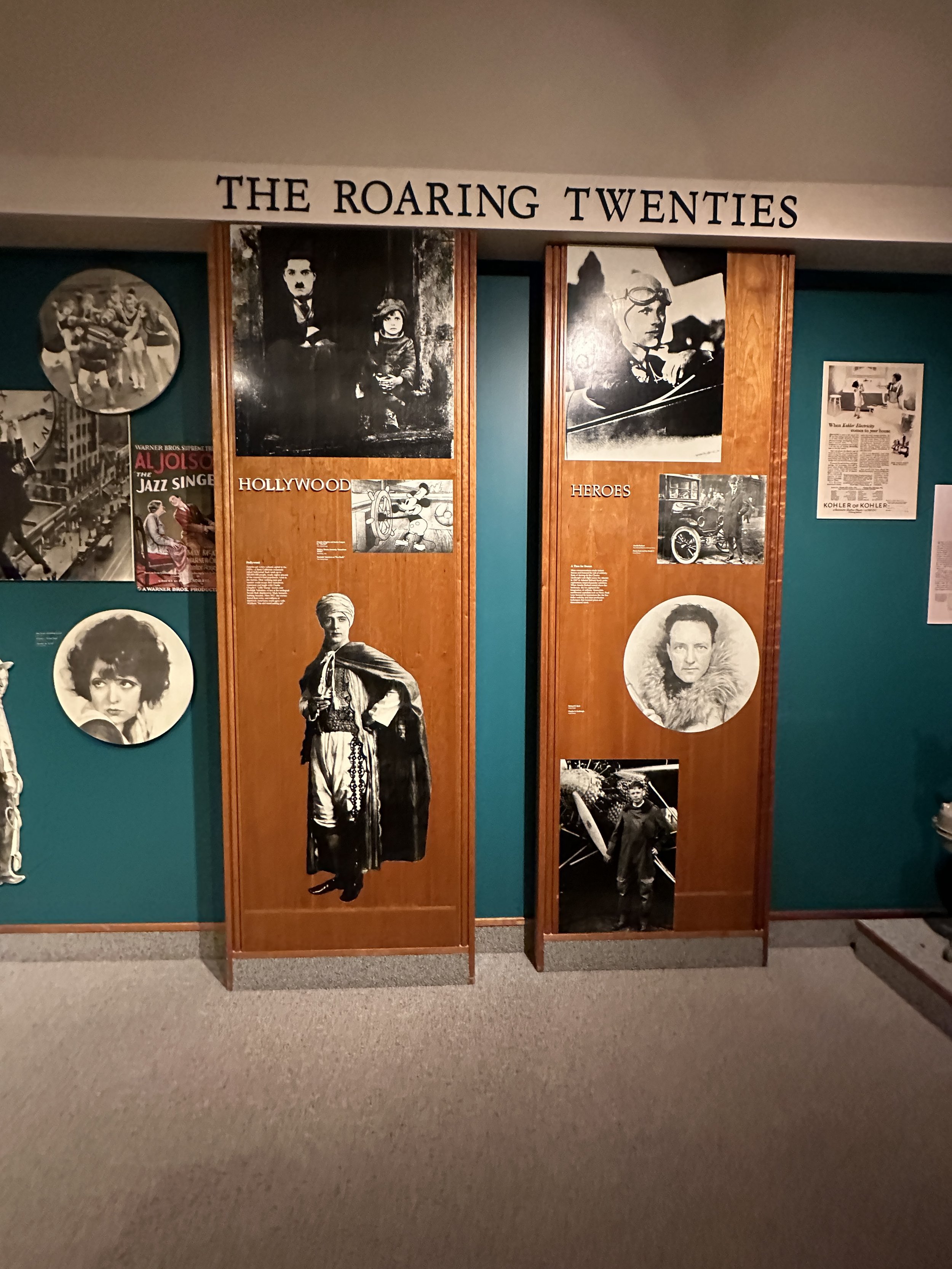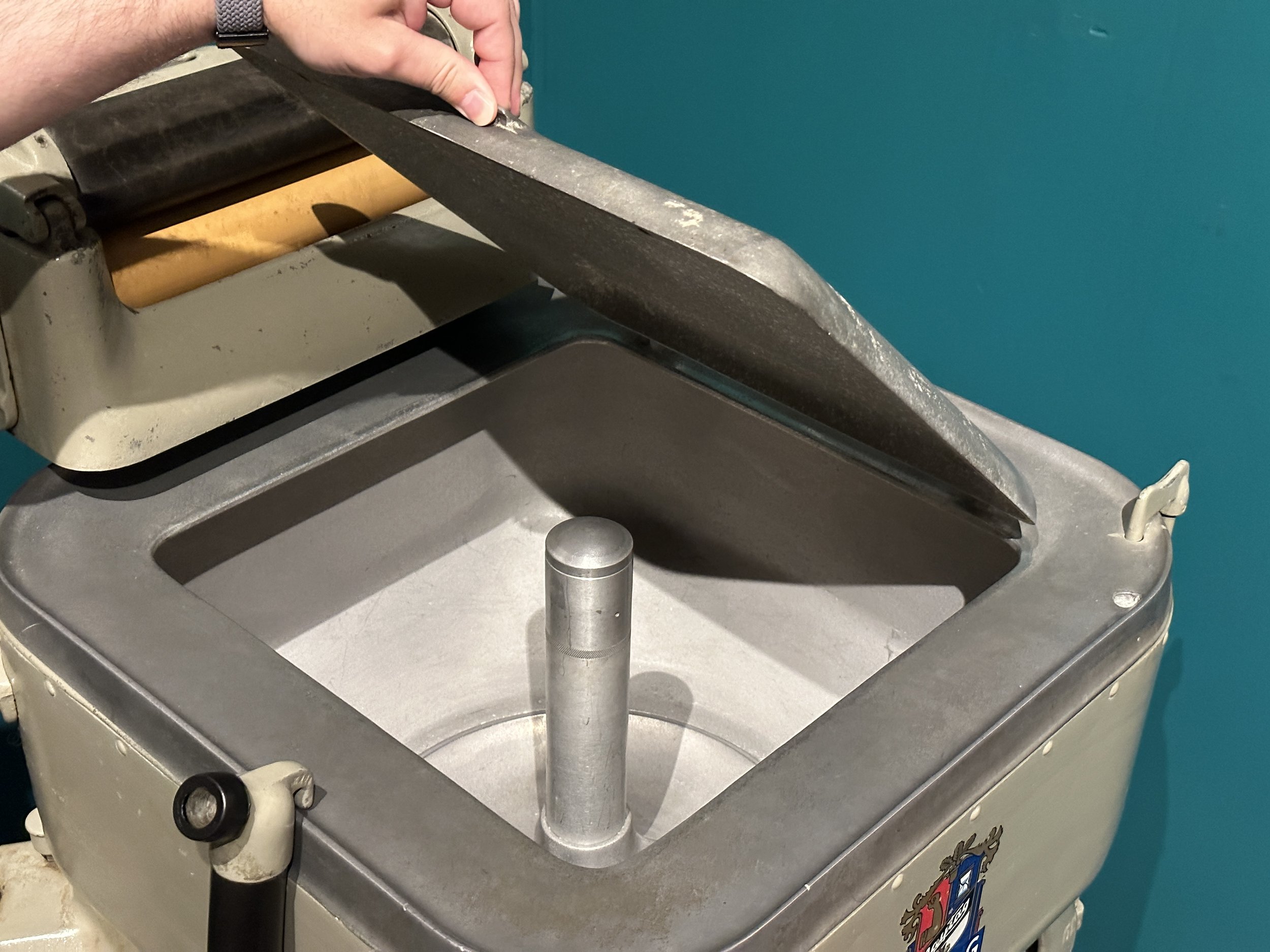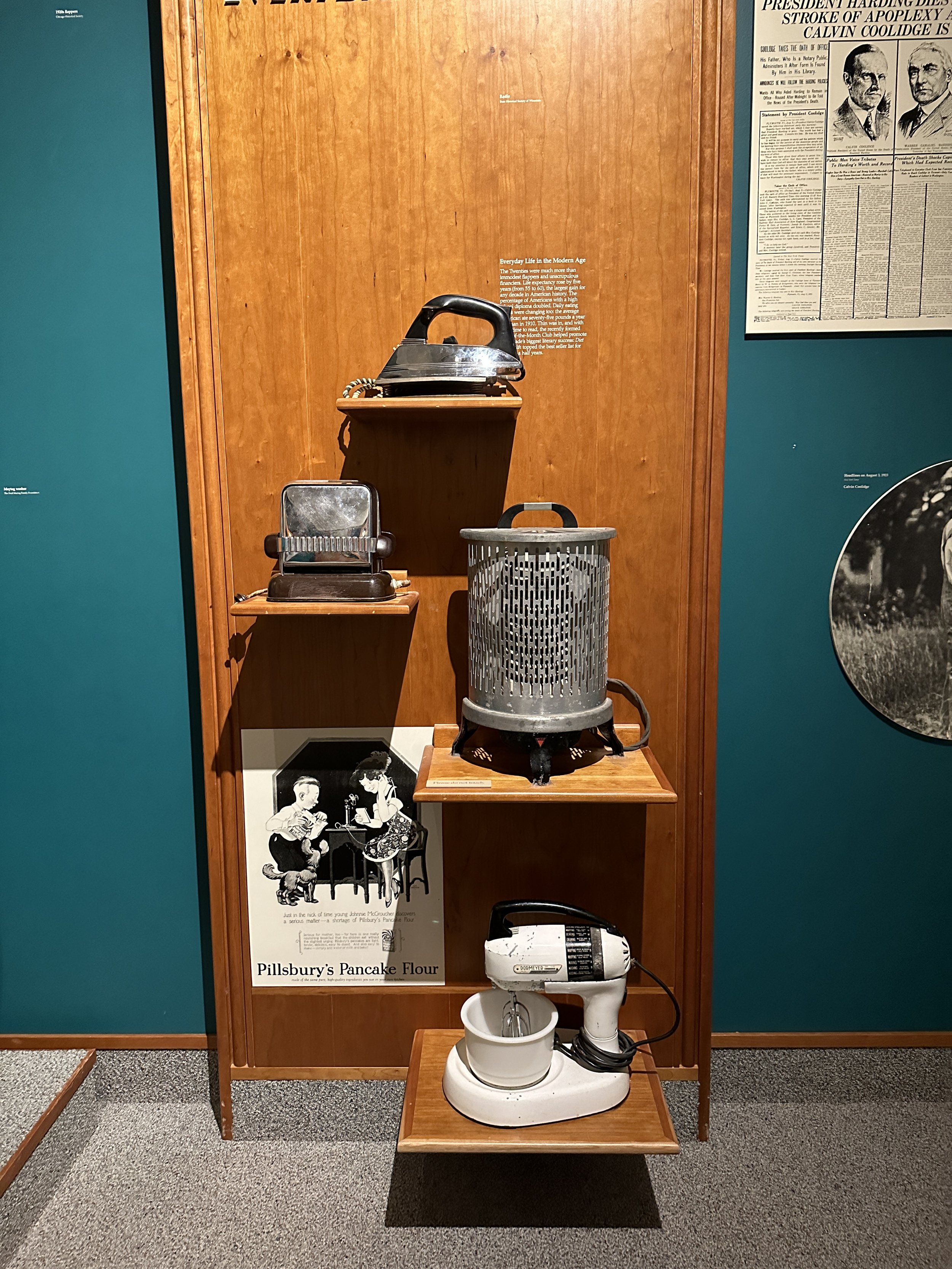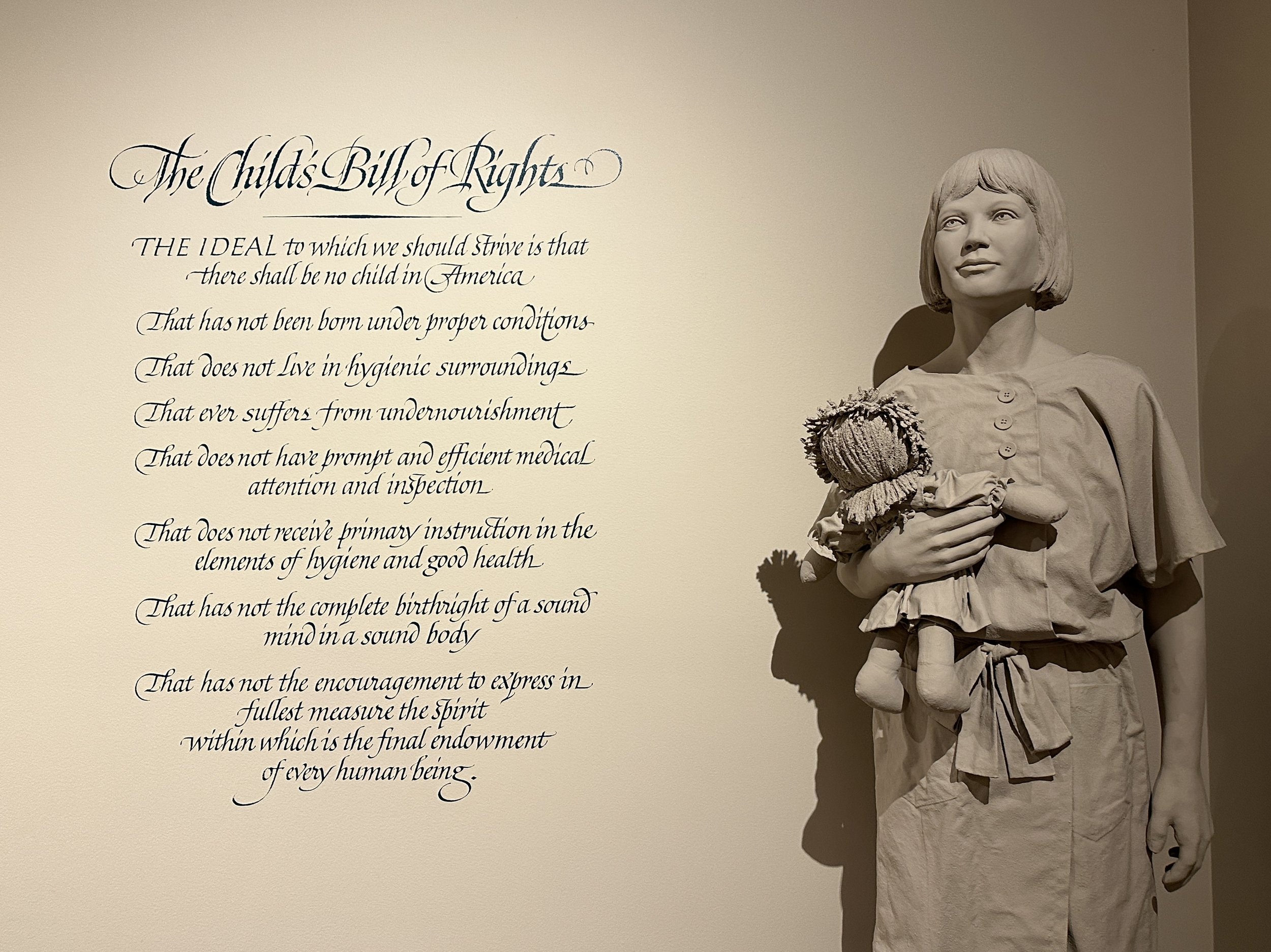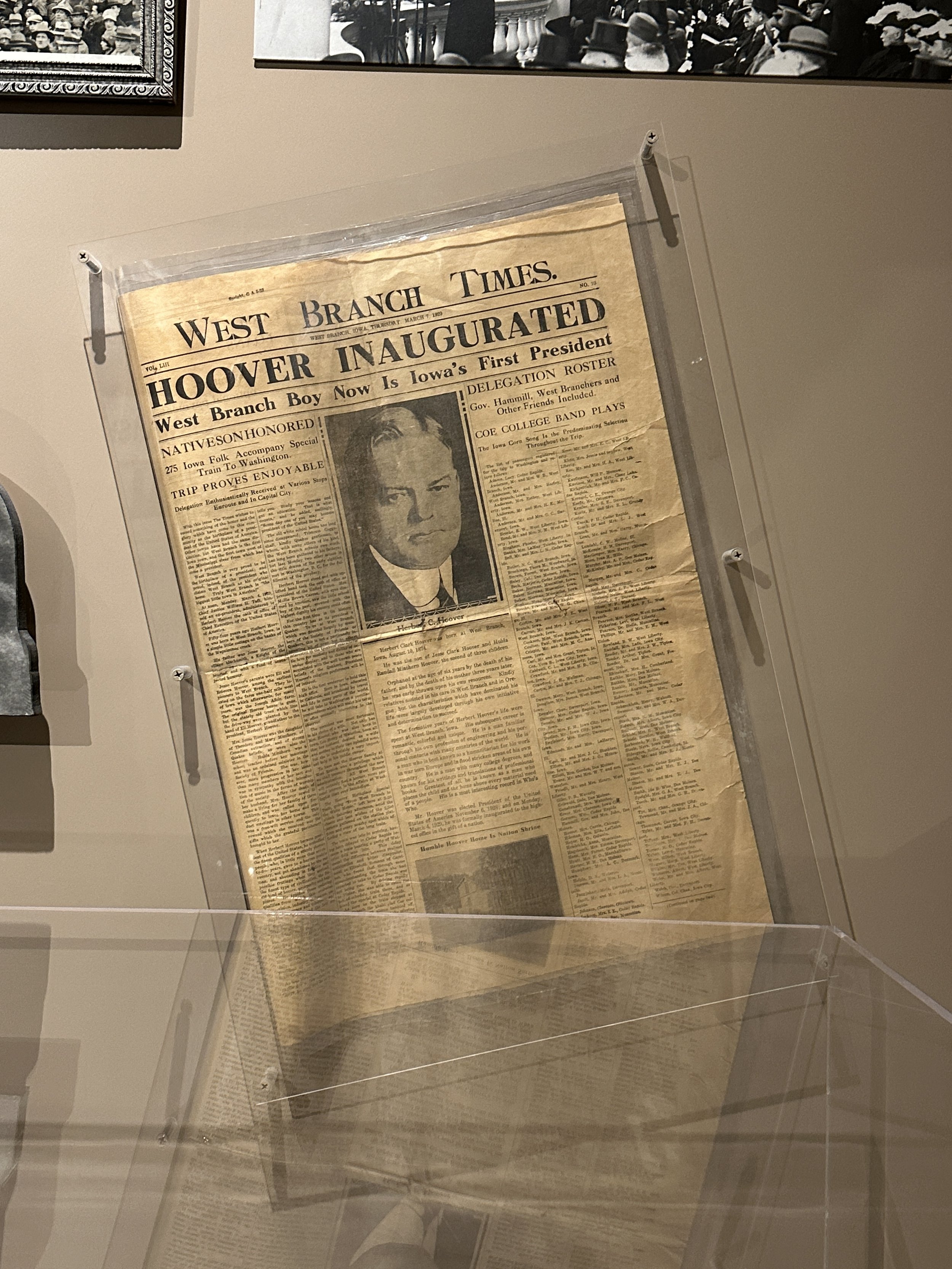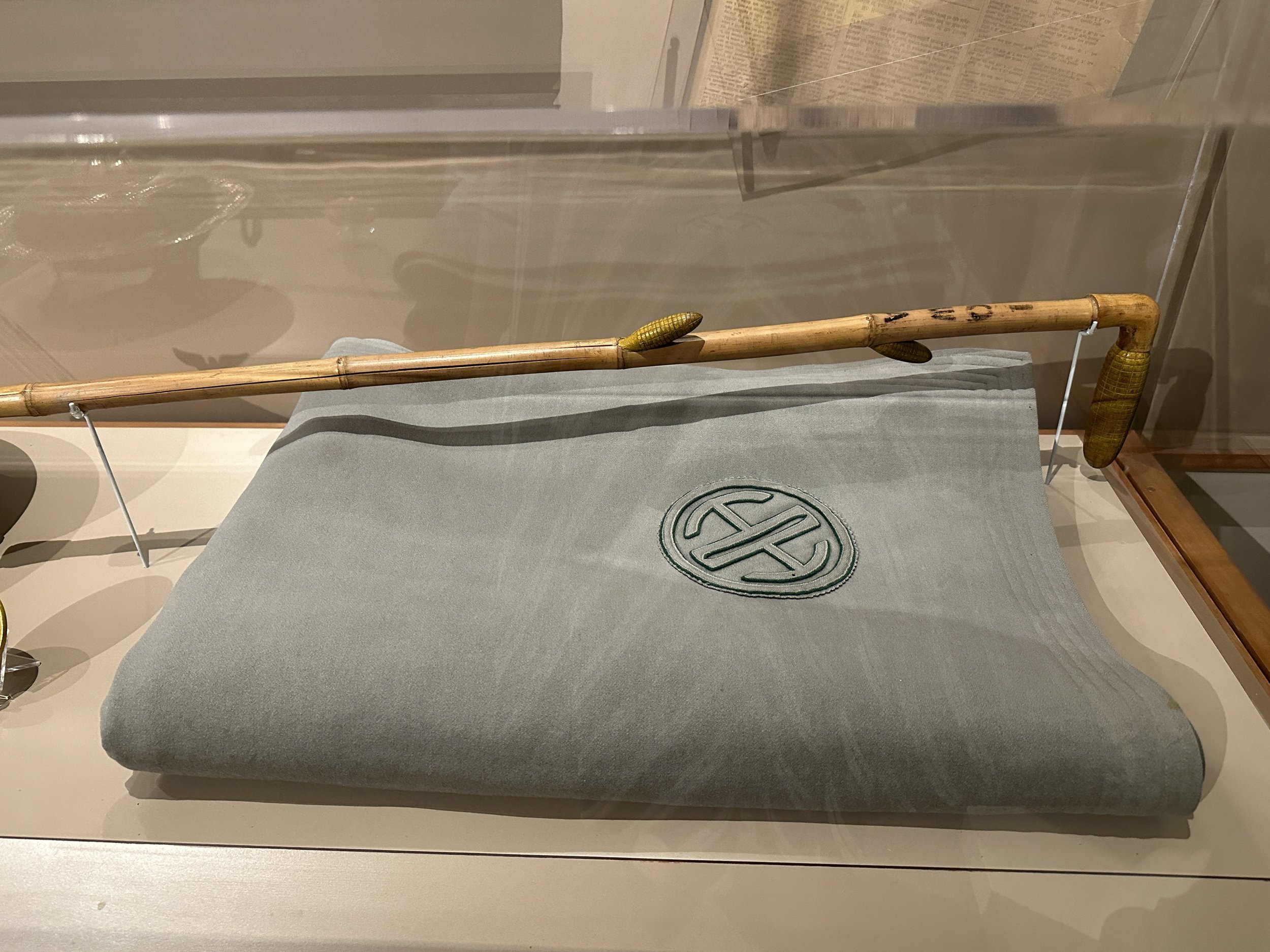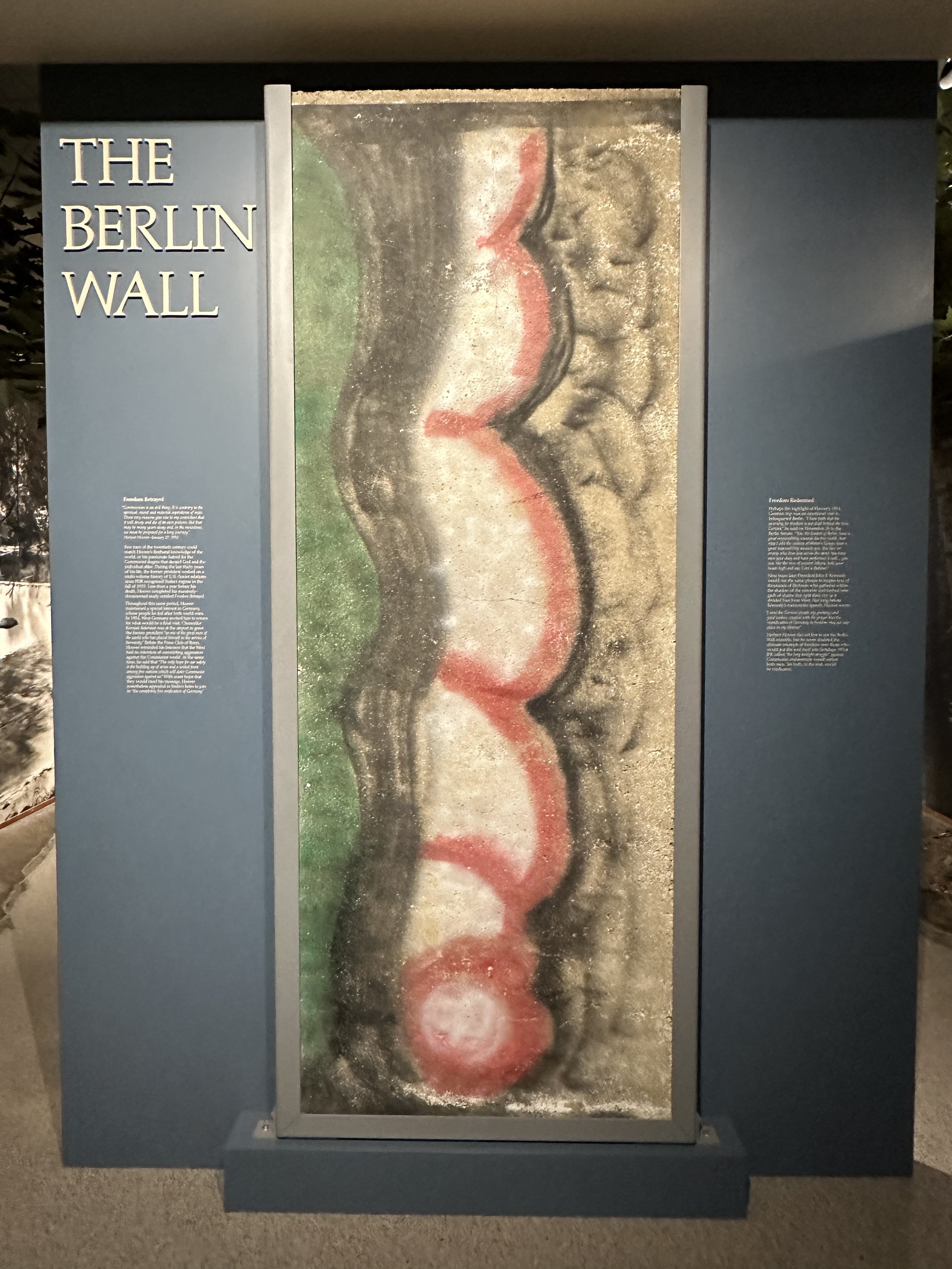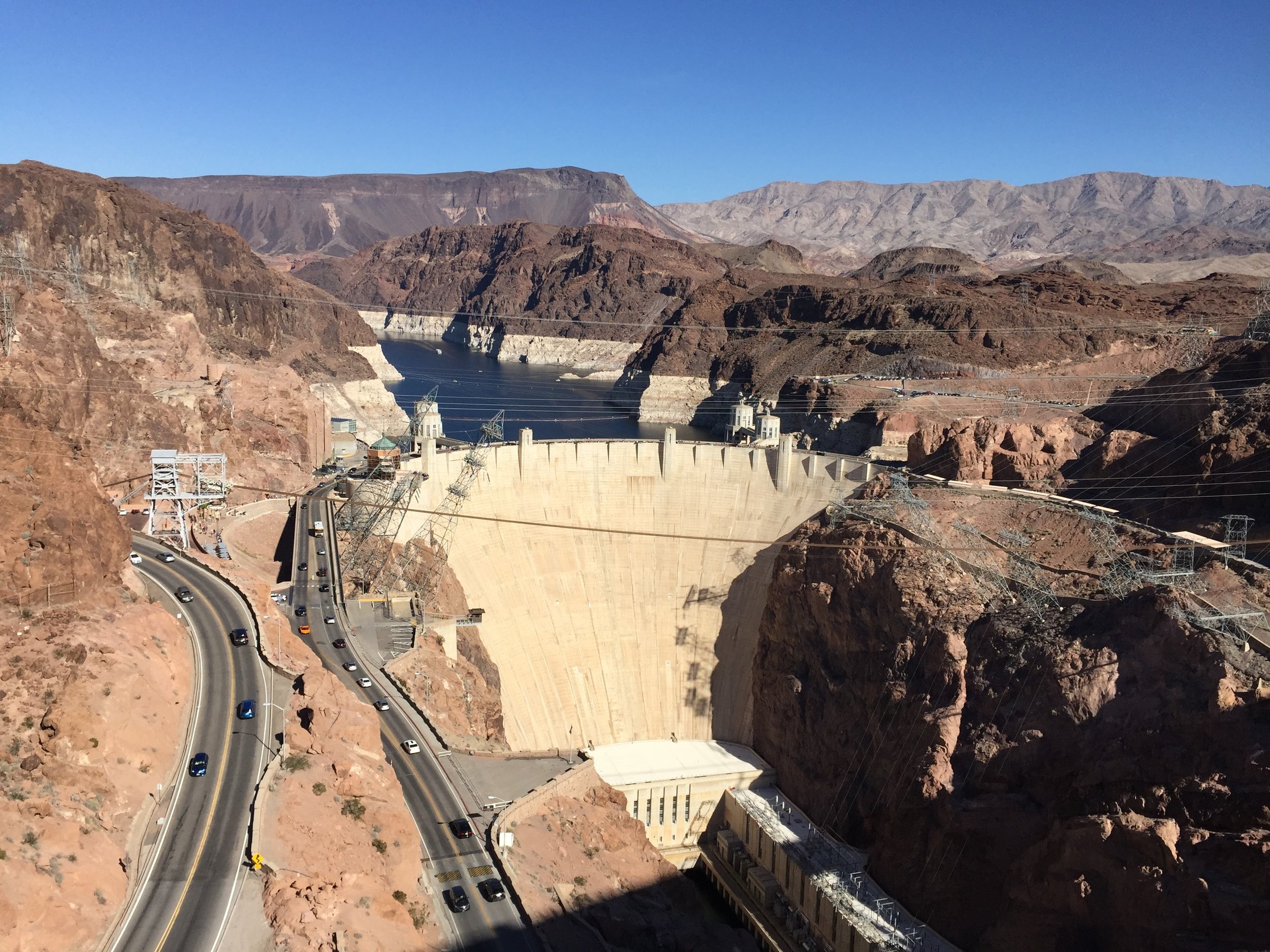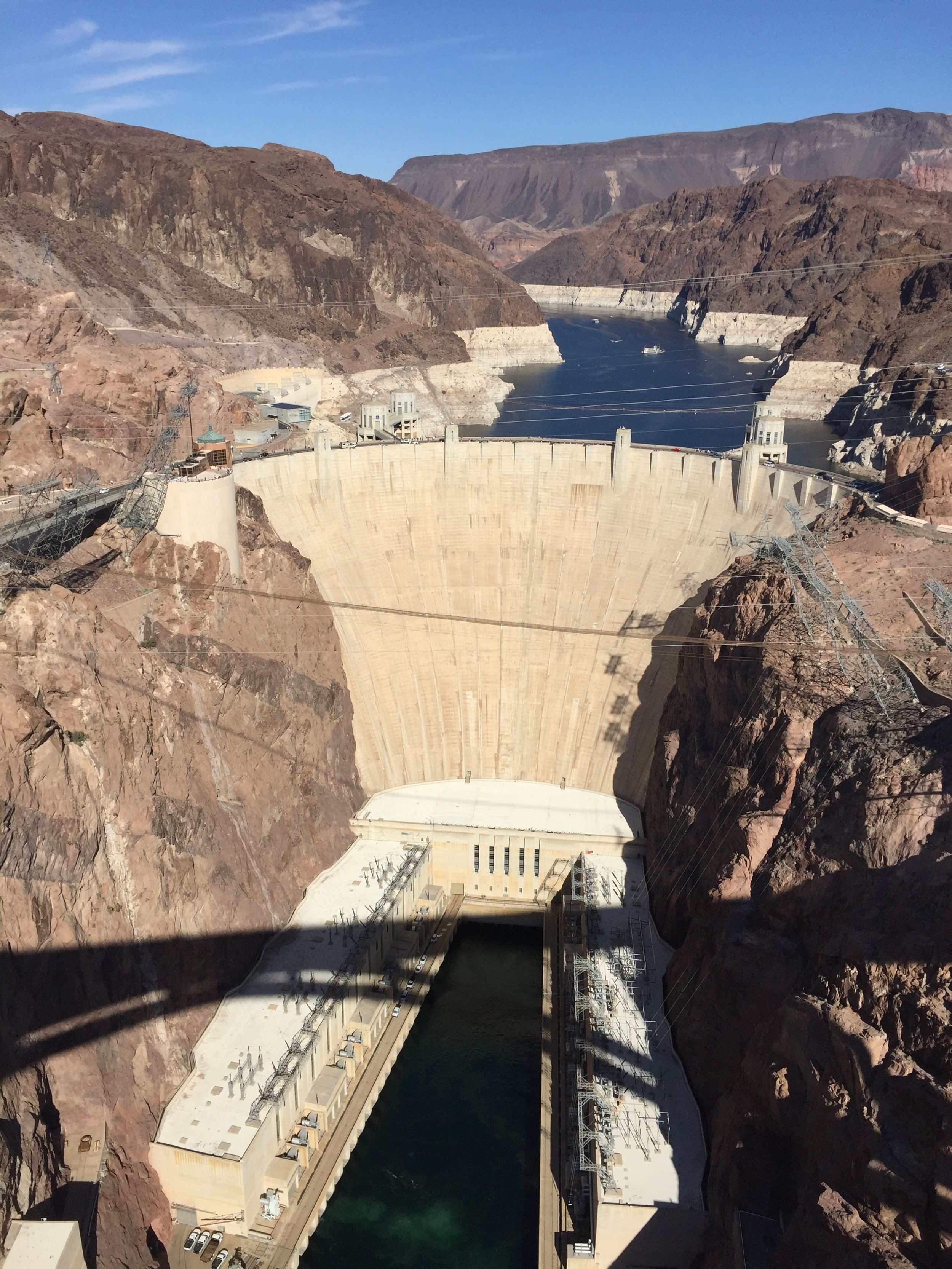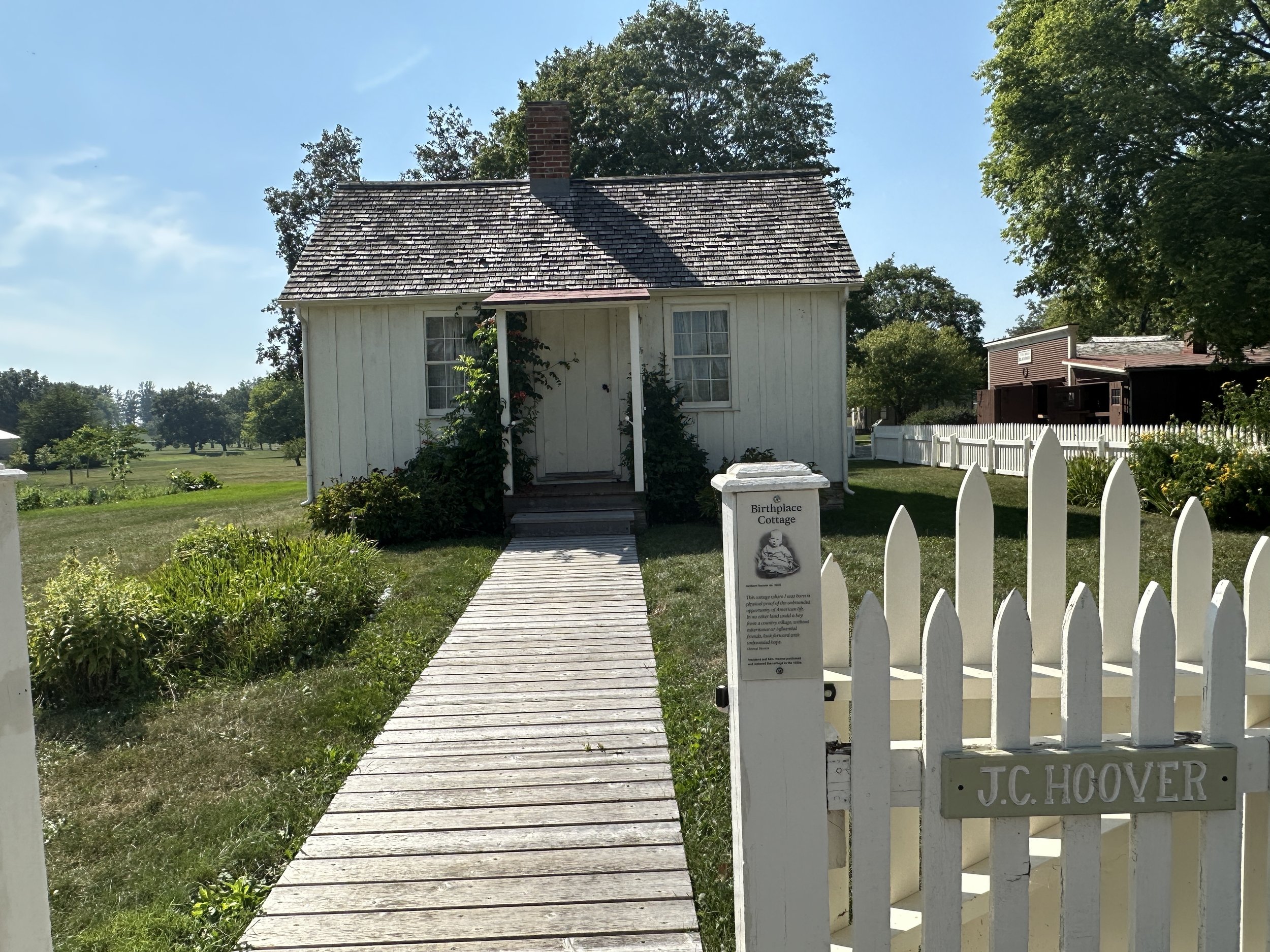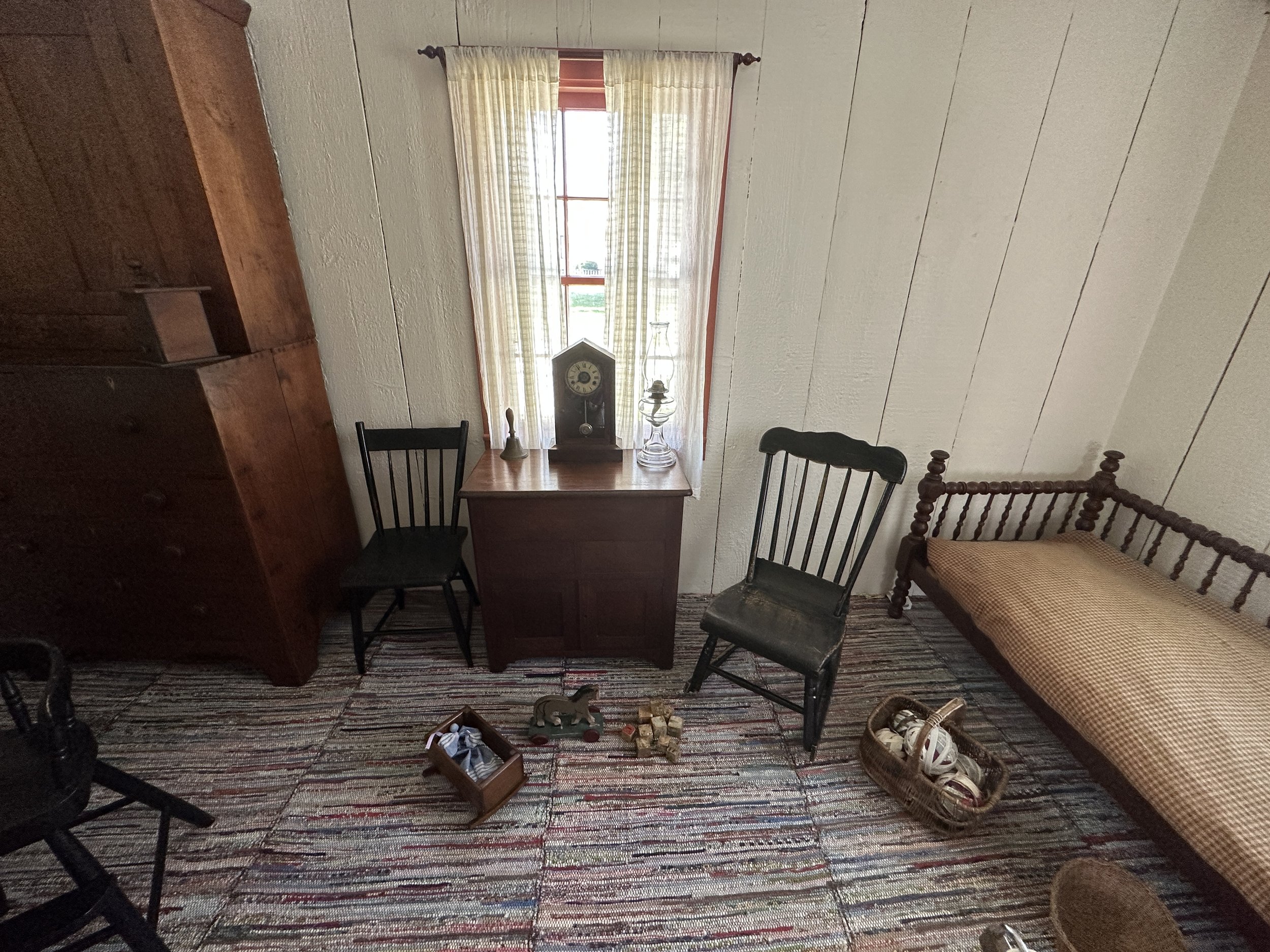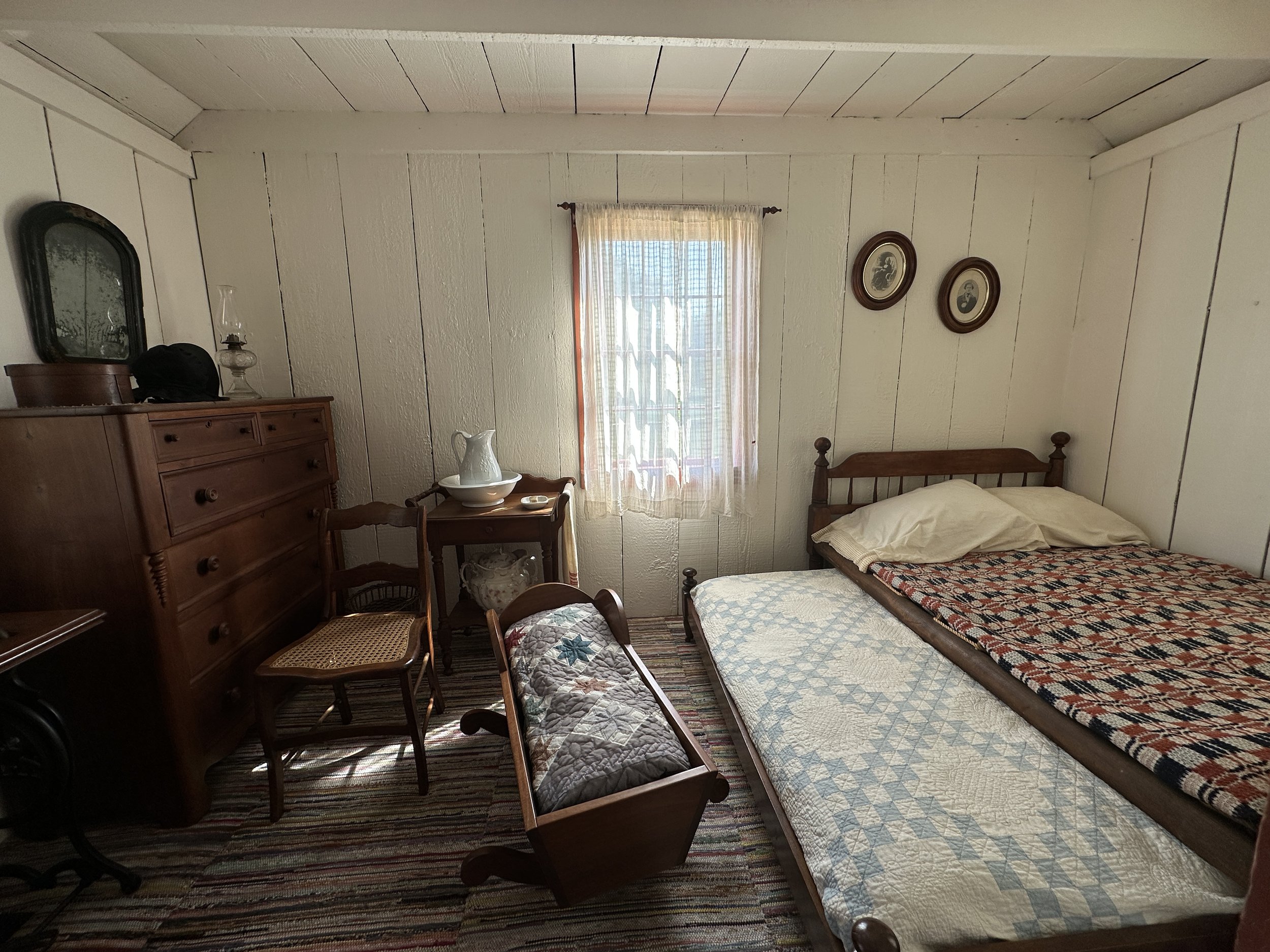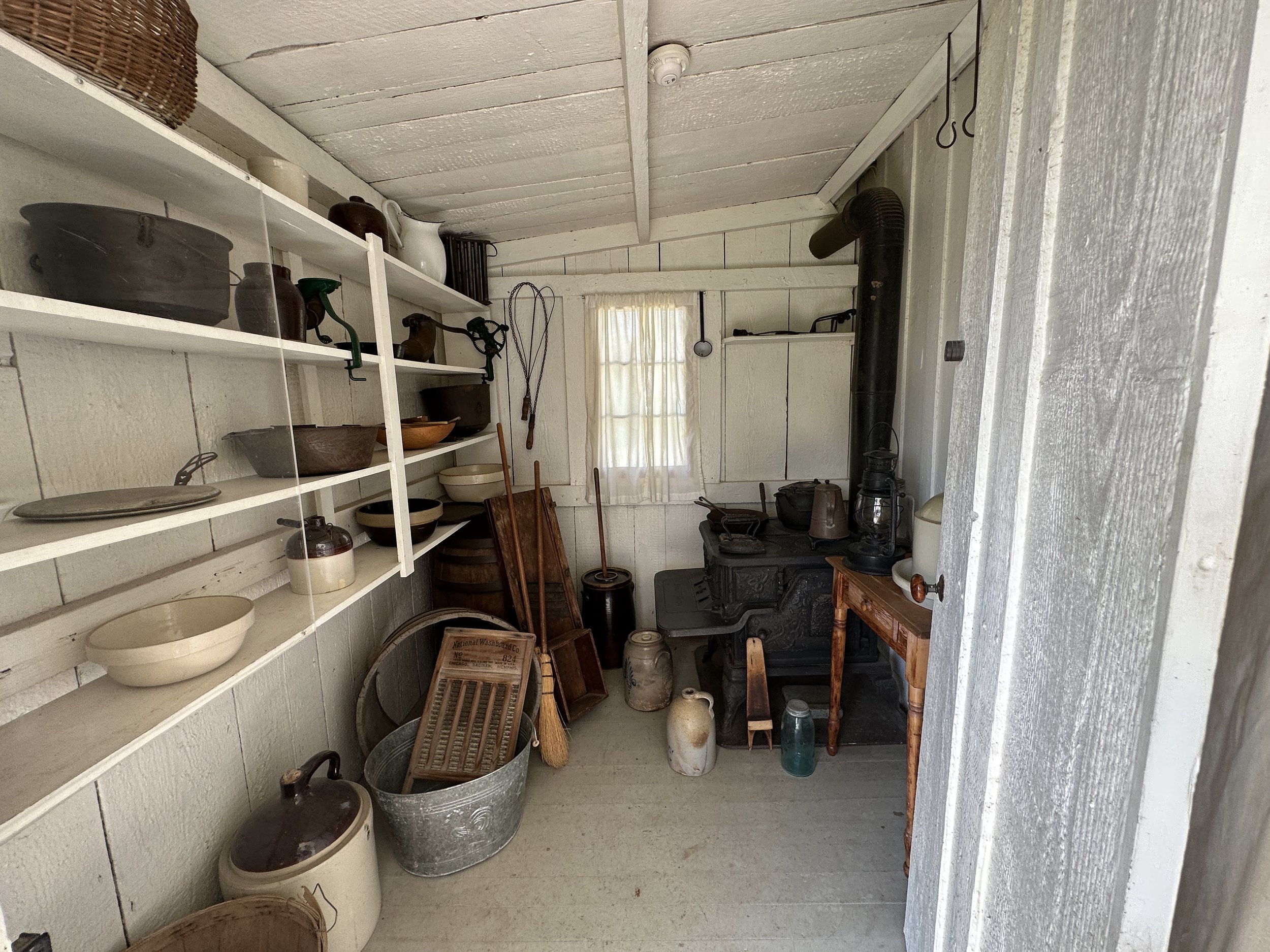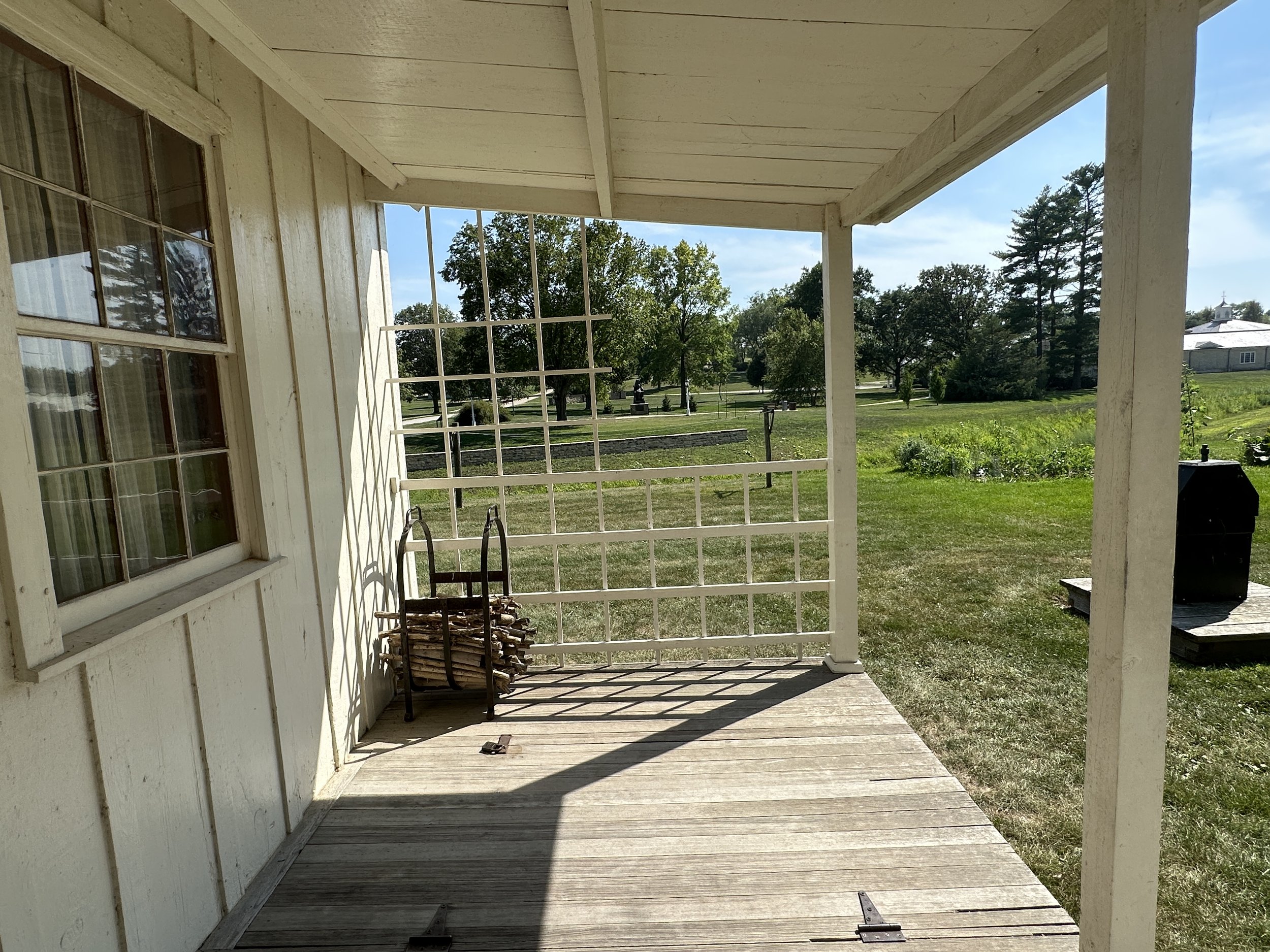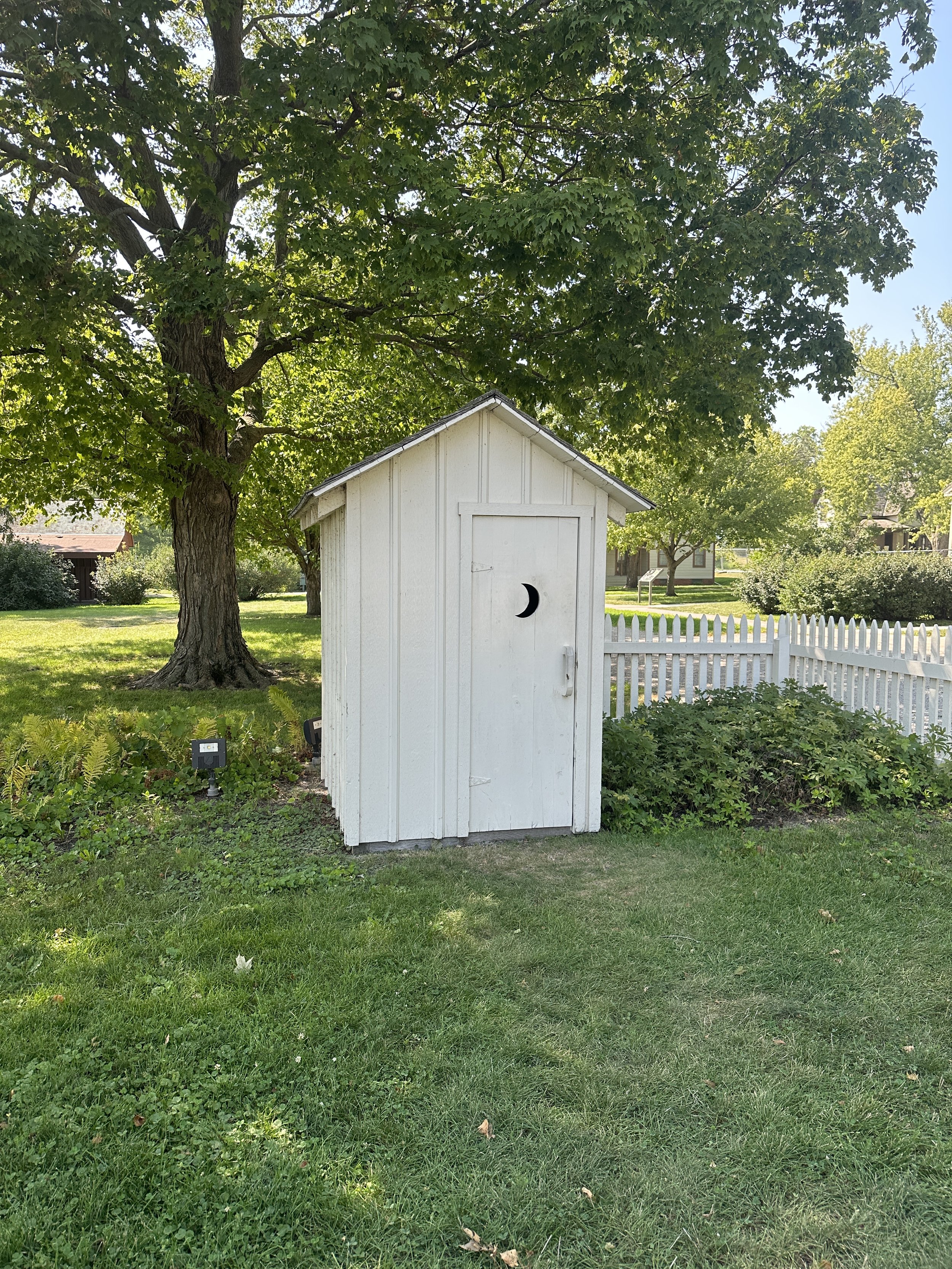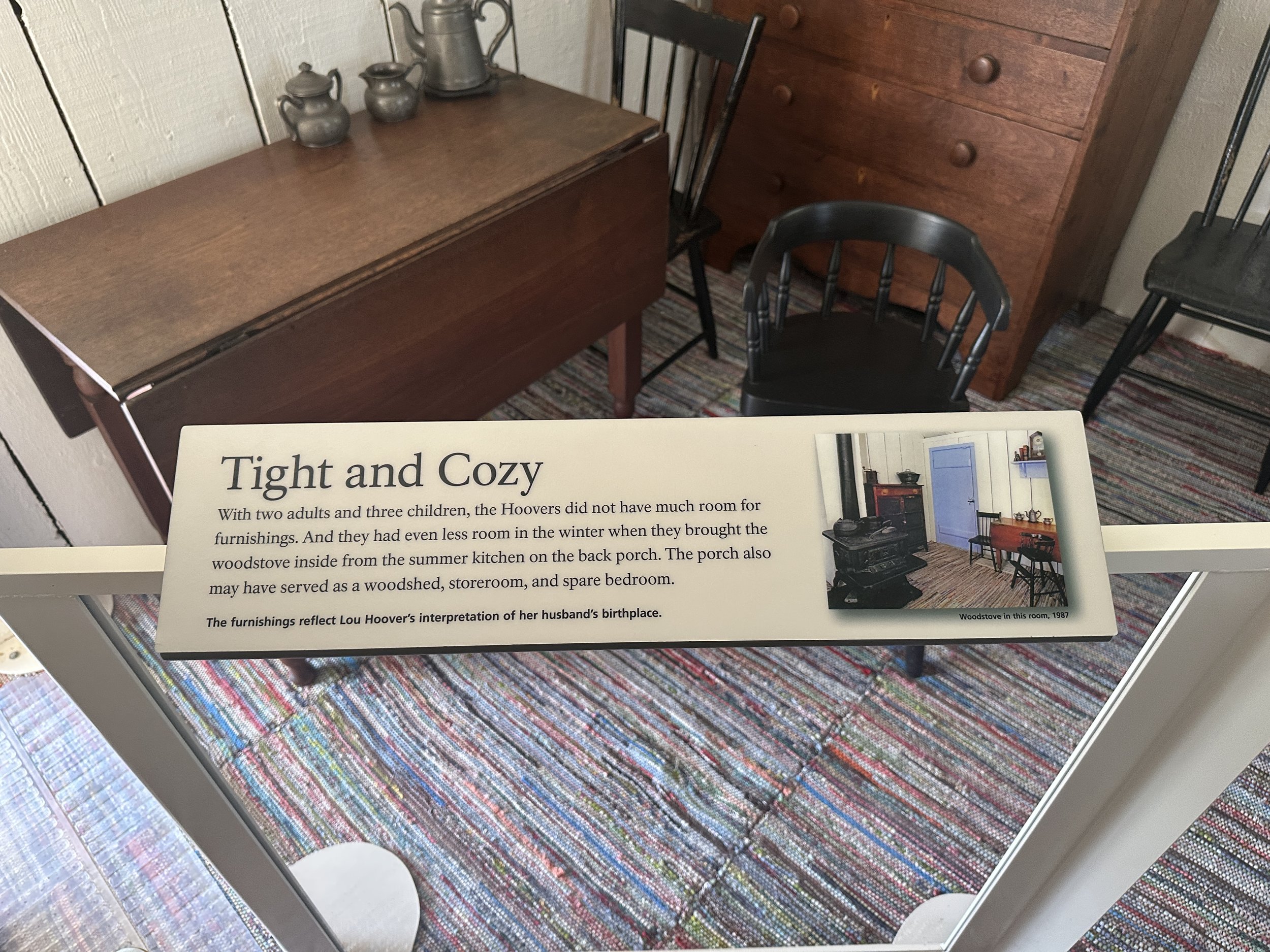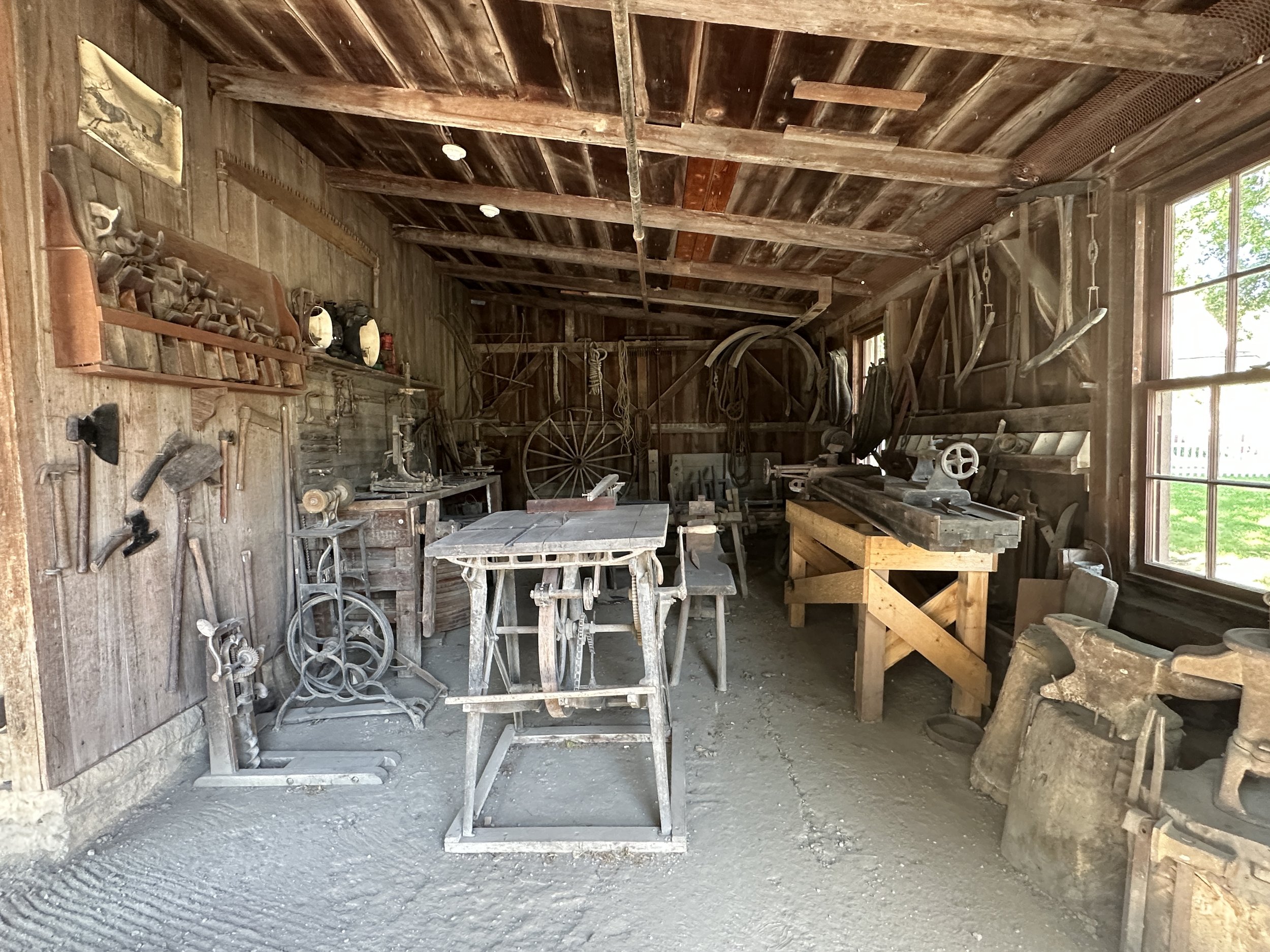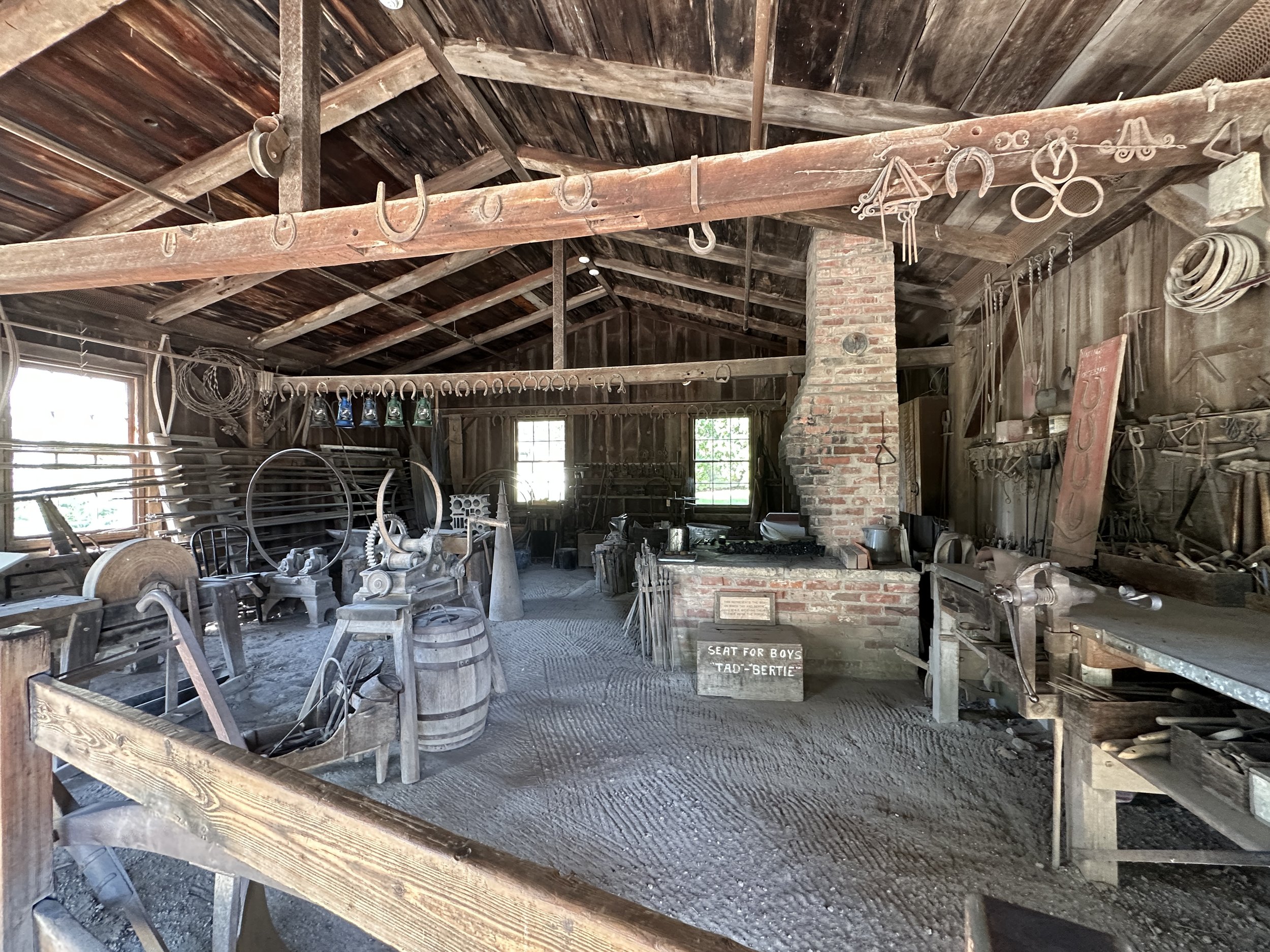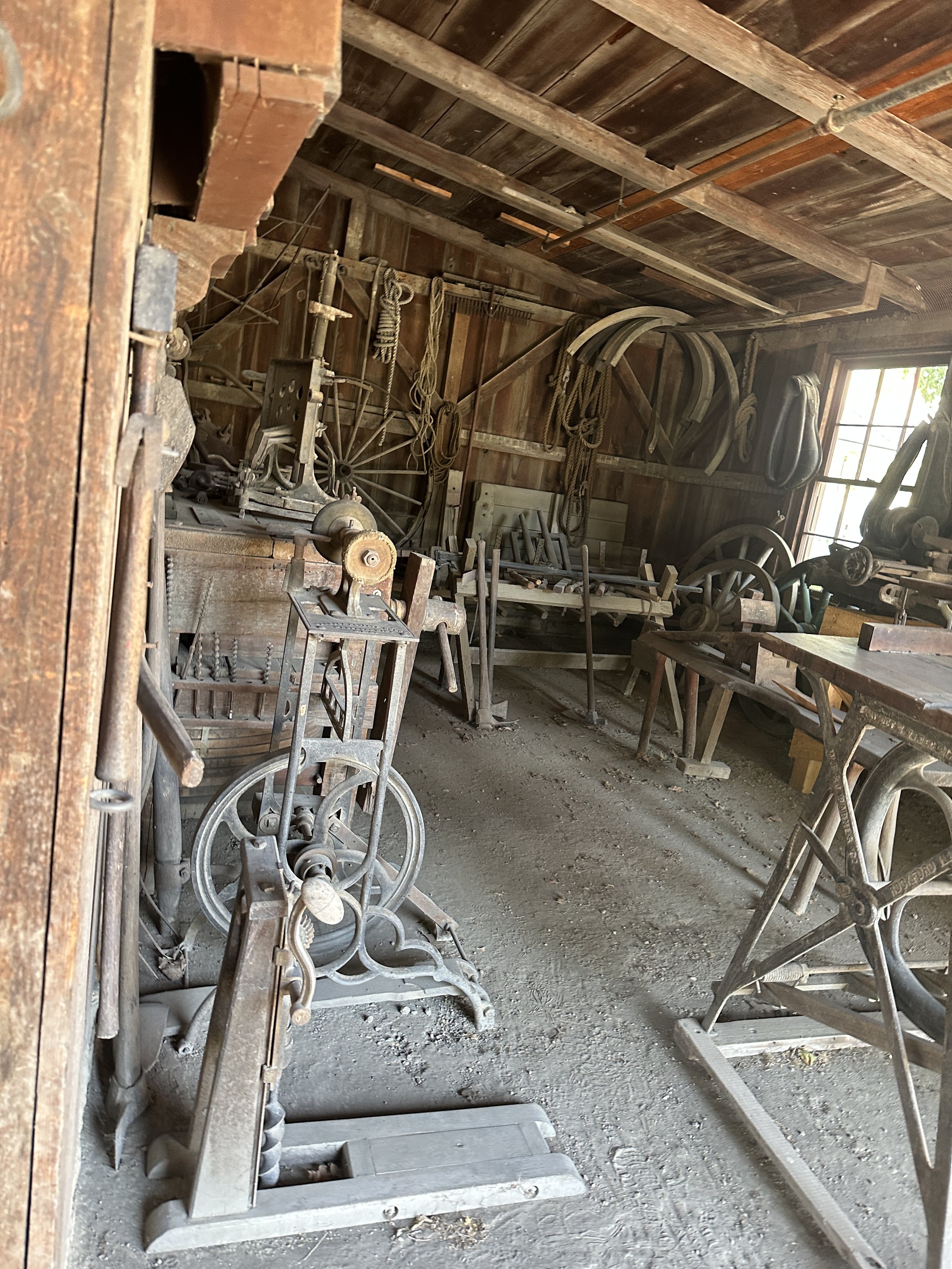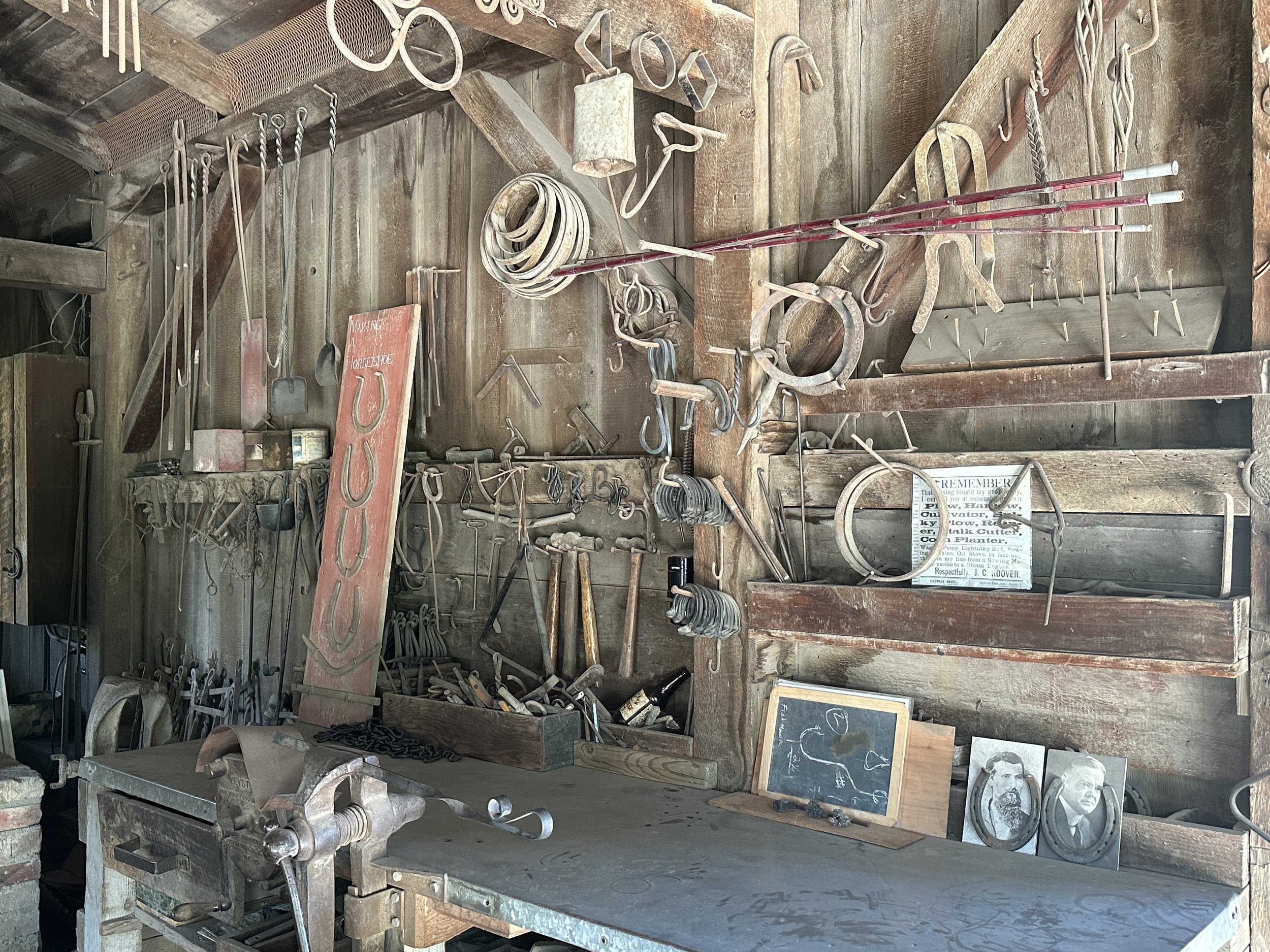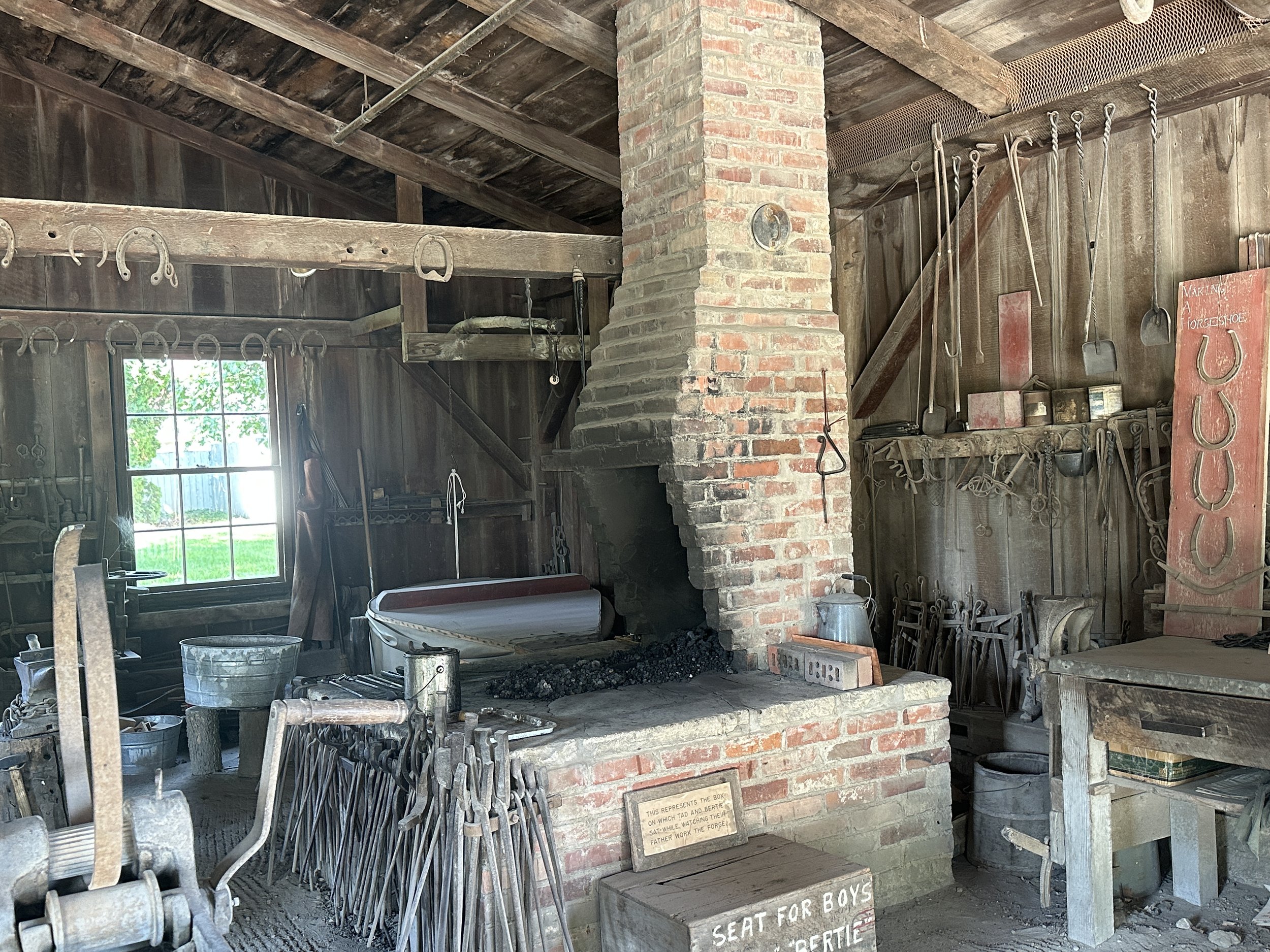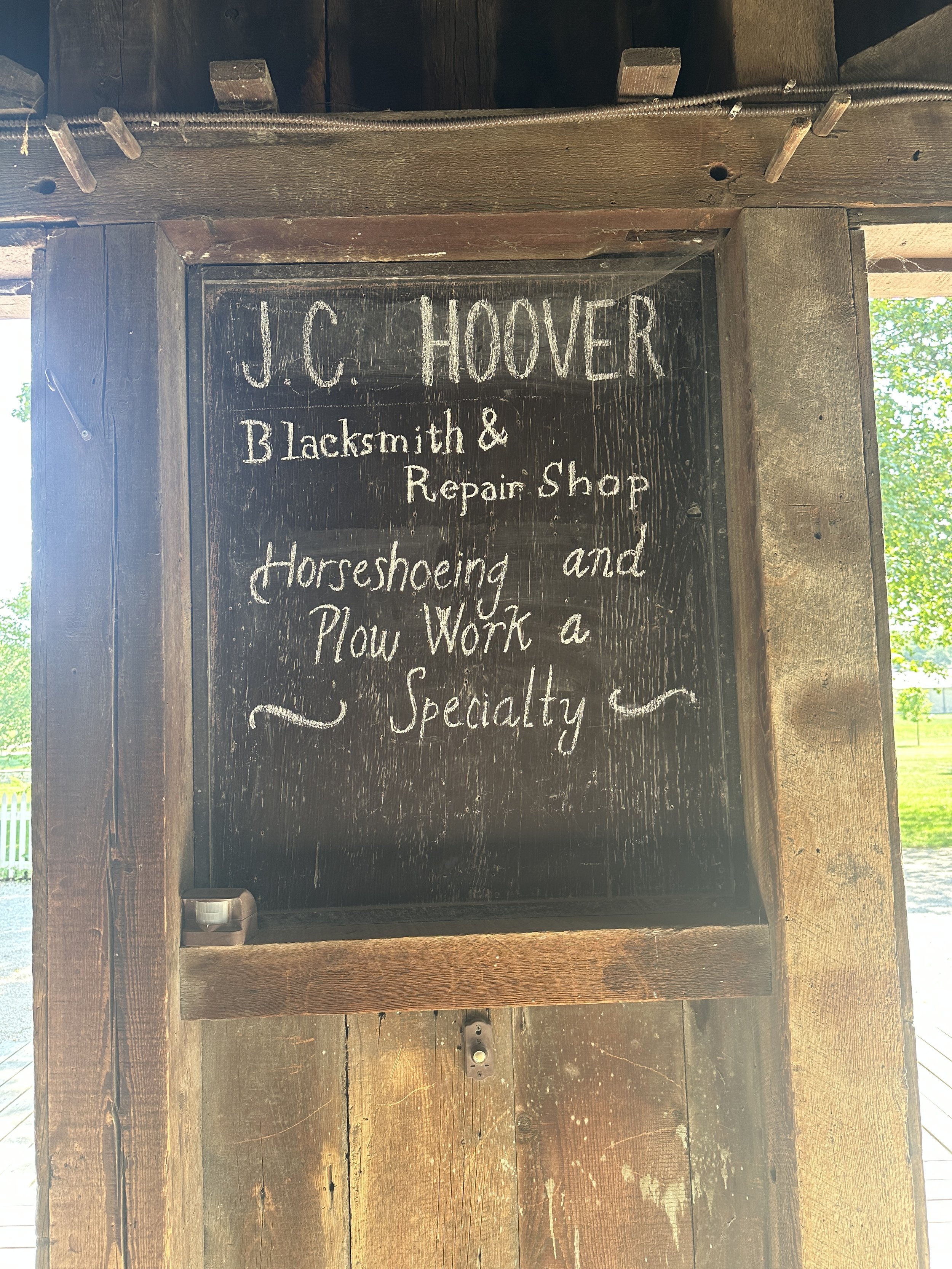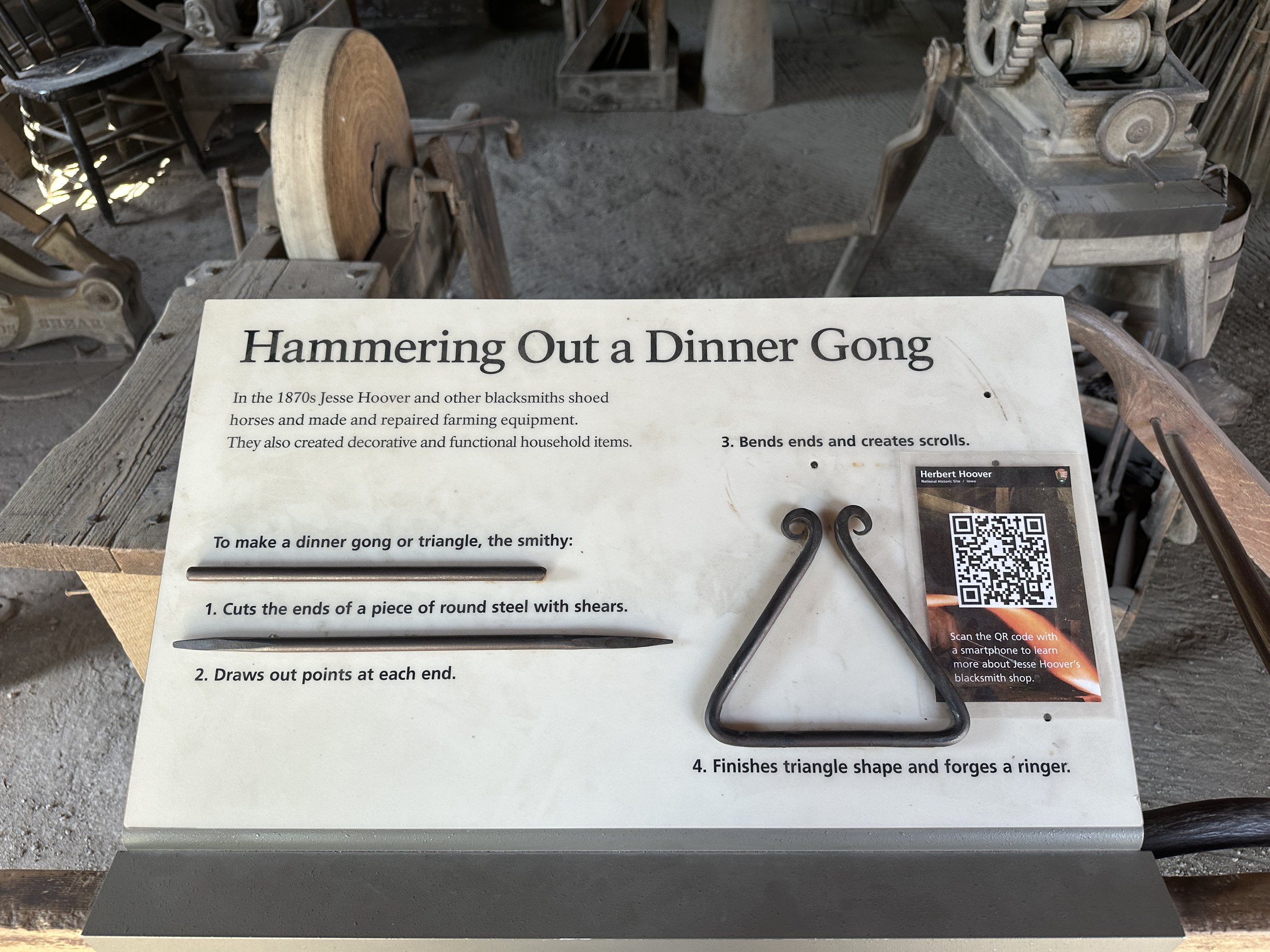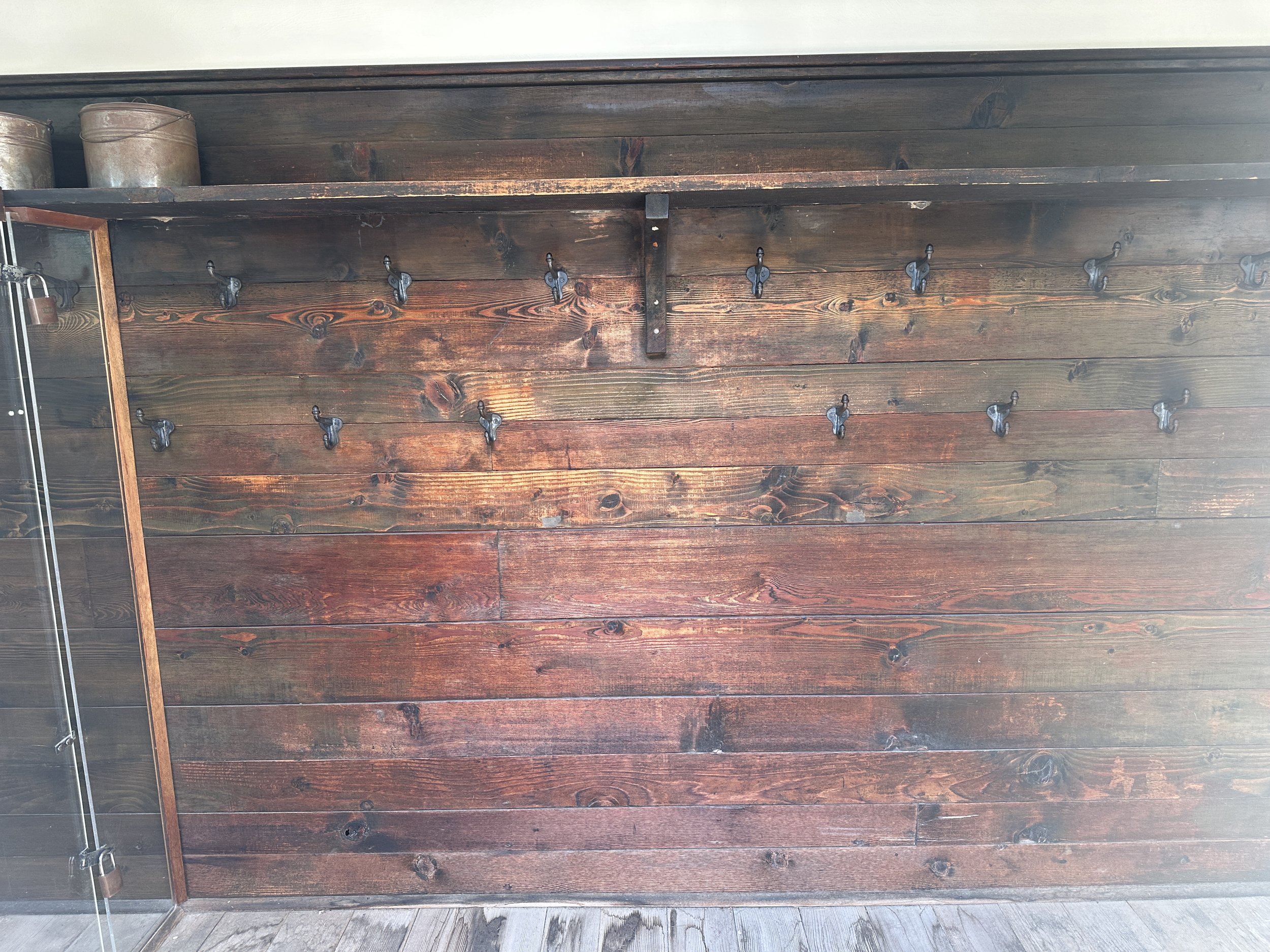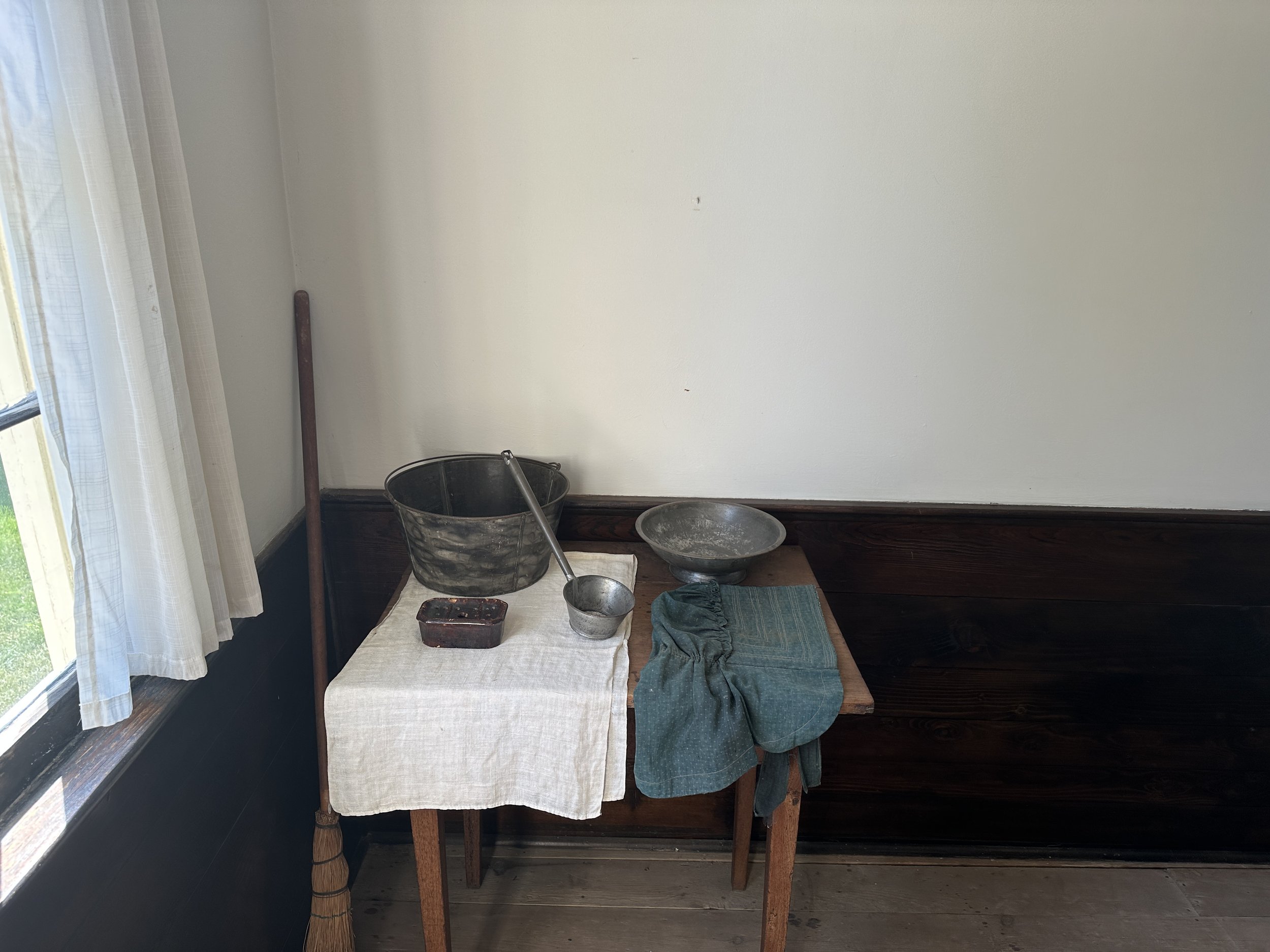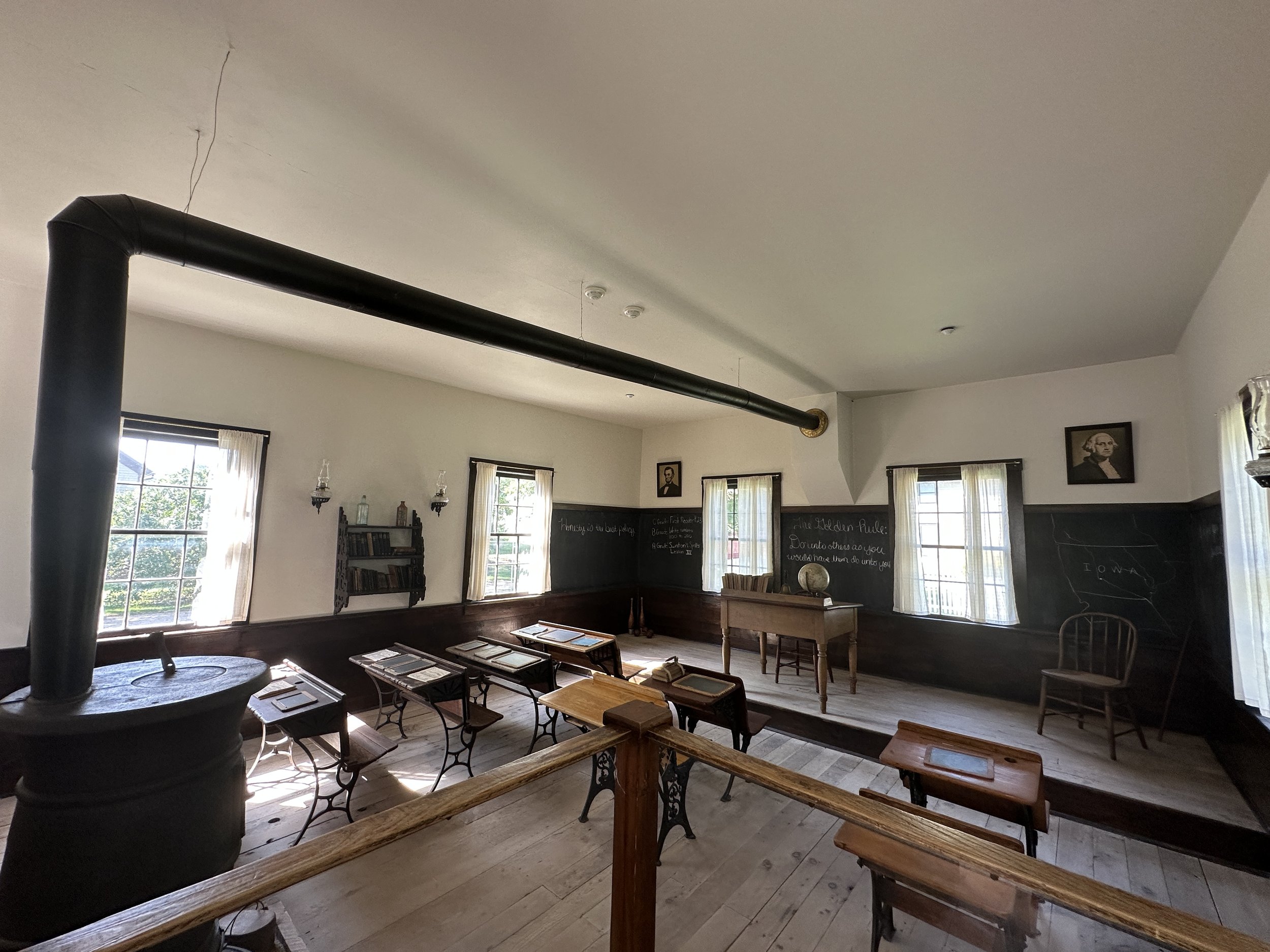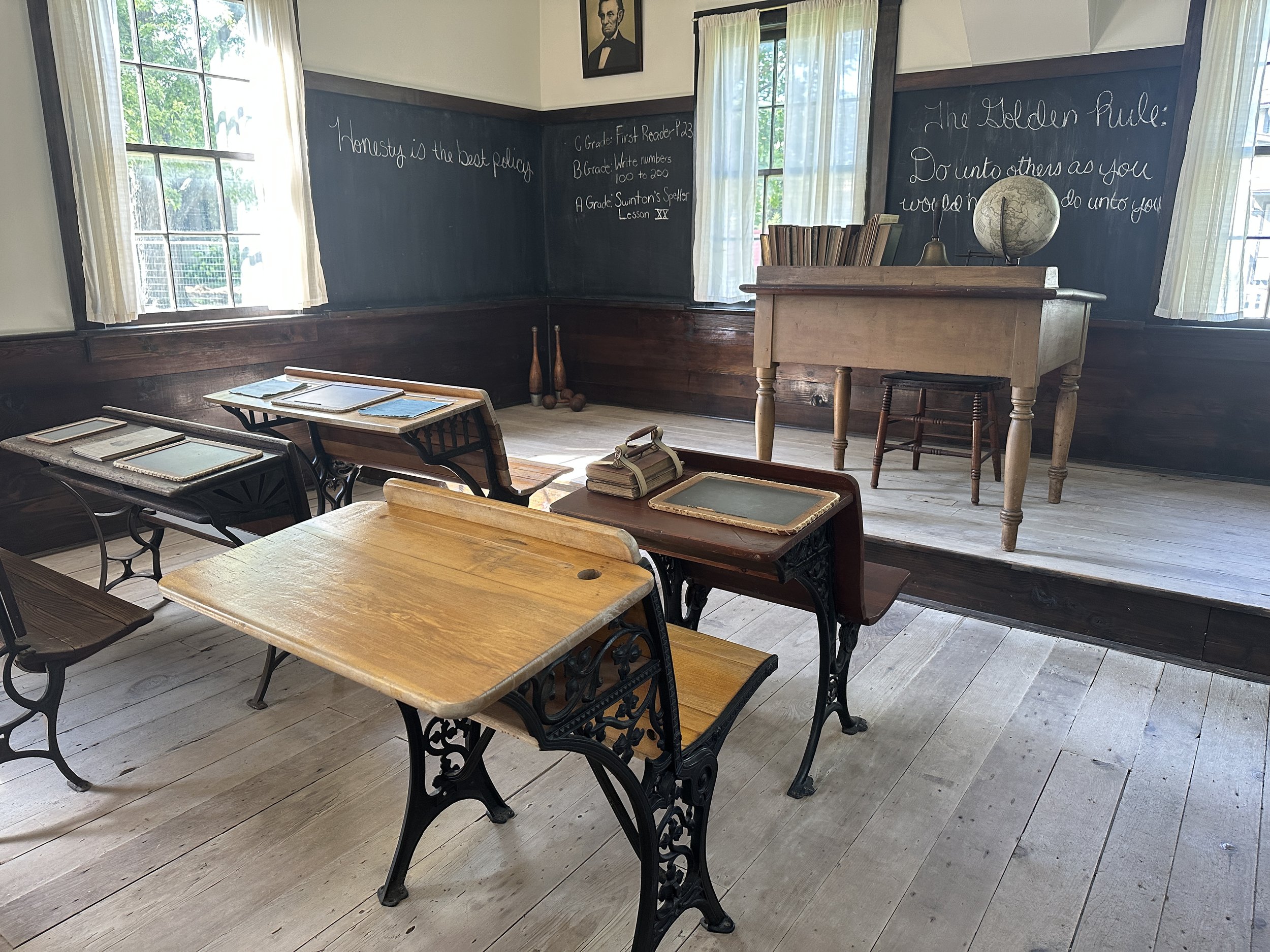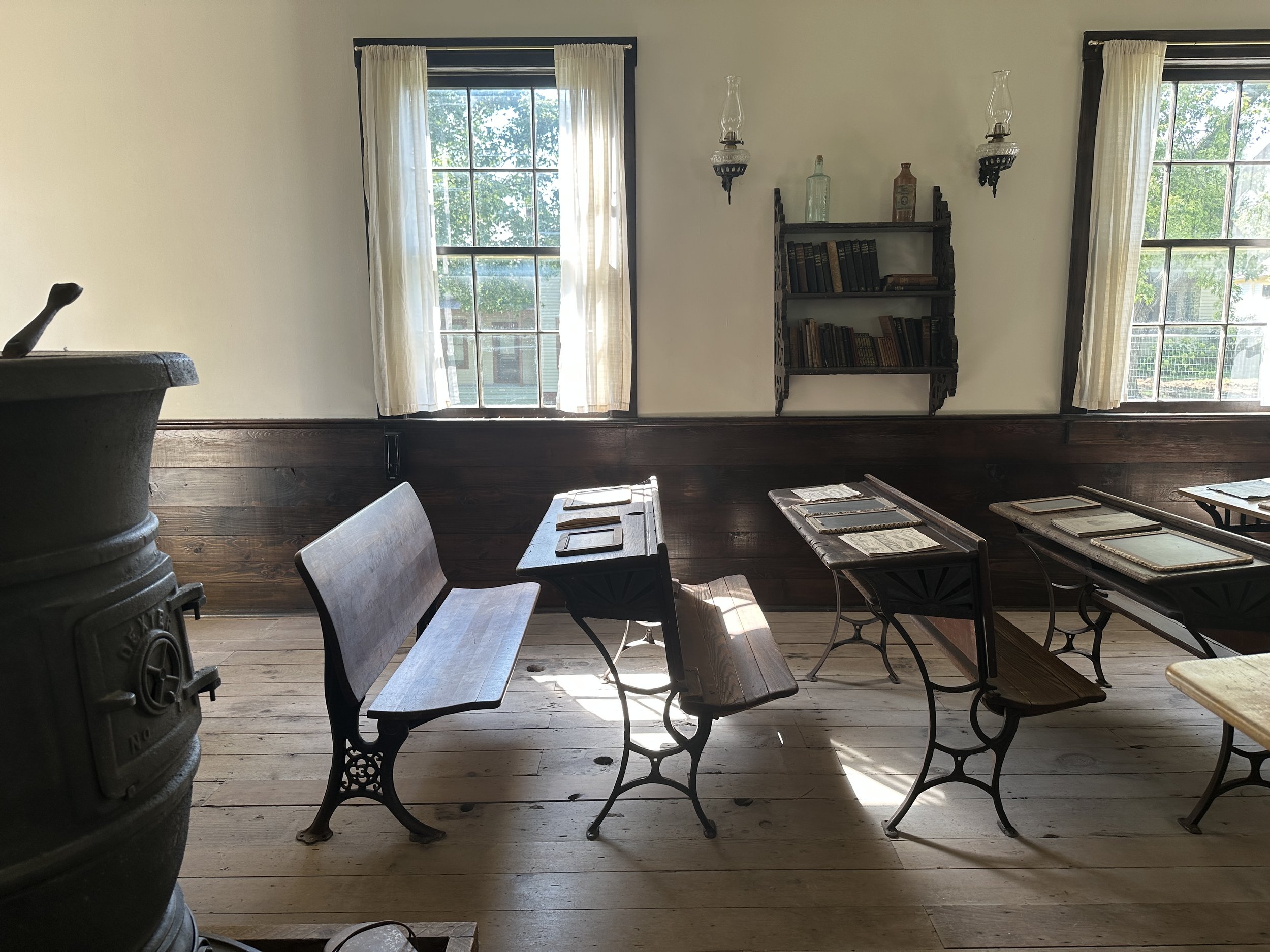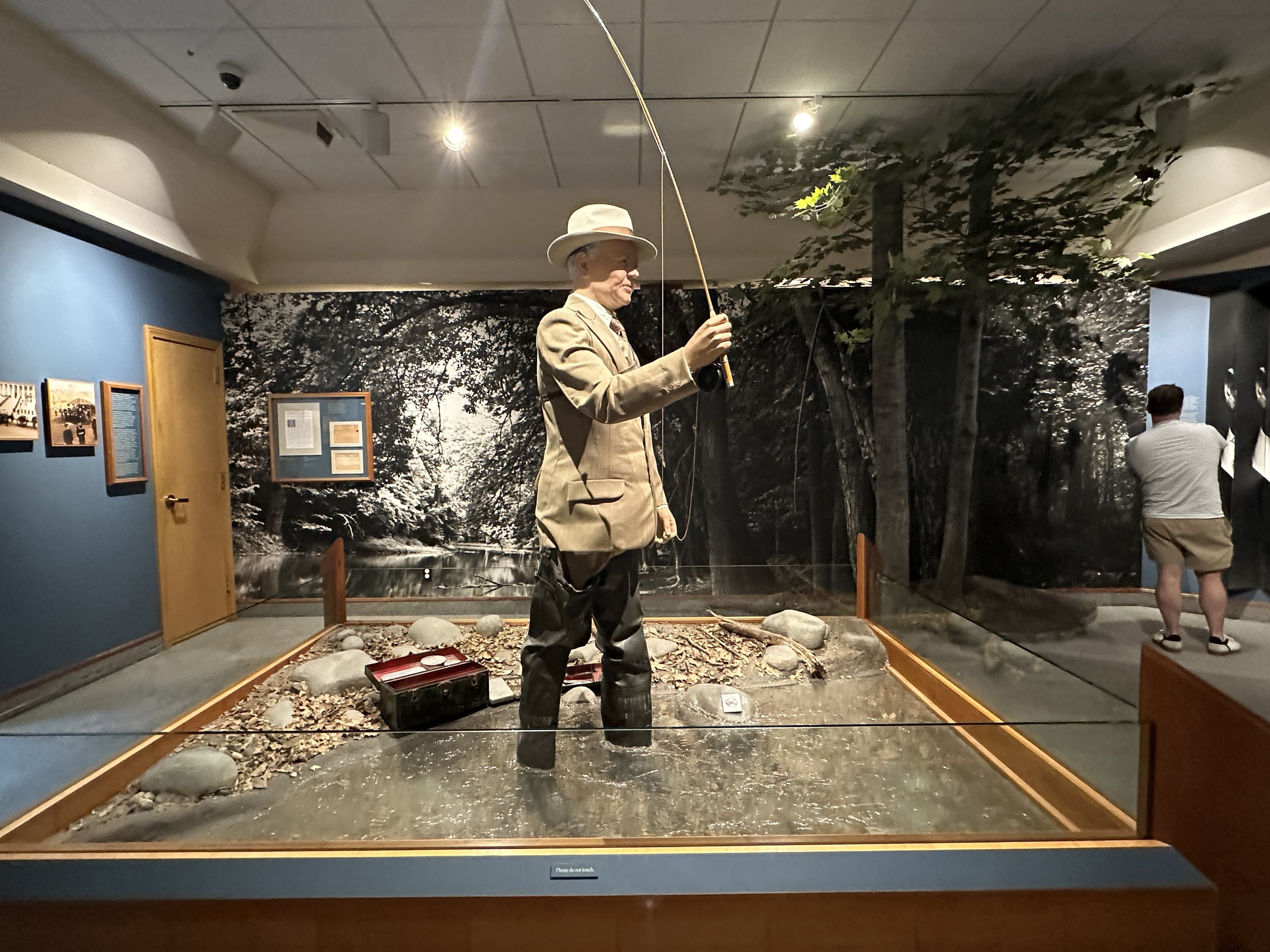Herbert Hoover Presidential Library
The Herbert Hoover Presidential Library & Museum is the third presidential library we’ve visited so far. The first two were Ford and Nixon. Right next door to the library is the Herbert Hoover National Historic Site.
Greeting you in the entryway of the library is this intricately carved and decorated wooden timeline of Herbert Hoover’s life.
I didn’t know anything about Herbert Hoover before this visit to his library and museum. Obviously he was president well before I was born, as a matter of fact he was president before my grandparents were born. Anyway, I didn’t remember anything about him from school so it was cool to learn about his life.
During WWI when Belgium was in need of food and supplies after being invaded by Germany, Hoover was asked to lead the Commission for Relief in Belgium. Belgians sent back embroidered flour sacks as a show of gratitude. These flour sacks are beautiful. I wish we could have touched them.
We’ve all heard of “Meatless Mondays”, but I thought that was a newer idea to help reduce the impact that growing animals for food has on climate change. Apparently, it was started during WWI and not only did Hoover encourage “Meatless Mondays” but “Wheatless Wednesdays” as well. These efforts, along with planting war gardens, allowed the US to send 34 million tons of food, clothing, and supplies to Europe.
There were quite a few cool items on display from the early - mid 1900s. Herbert Hoover was there to experience the first intercity transmission of video imagery, how cool.
Hollywood got big in the 1920s and there was even a cute picture of Steamboat Willie.
The early appliances were also pretty fun. It’s crazy how much technology changes and stays the same. There isn’t a ton of difference to the basic function on washing machines from the early 1900s to now. Clothes, water and soap swirl around to remove dirt, then to rinse, and then squeeze the water out somehow. Now we use a spin cycle, then they used an actual crank press to squeeze it out, but basically the same.
Some of the things I love most about going to the presidential libraries and museums, is the care and reverence of children and childhood. It feels like it has become so commoditized now, that children and childhood are a thing we buy and sell. Obviously, I don’t have children, but I see it in the world. I saw it when I taught preschool, I saw the effects of it working in higher education. I hear about it in the news, on social media, and from friends. I feel like we spend too much time worrying about all the wrong things and not enough time worrying about kids learning to learn, learning to feel emotions, have empathy, and communicate, learning to enjoy nature, and kids just being kids.
In November 1930, Hoover presided over the White House Conference on Child Health and Protection, which led to child welfare reforms at the state and local level.
Just in case you aren’t able to read the text in the picture above, The Child’s Bill of Rights
The Child’s Bill of Rights
“THE IDEAL to which we should strive is that
There shall be no child in America
That has not been born under proper conditions
That does not live in hygienic surroundings
That ever suffers from undernourishment
That does not have prompt and efficient medical attention and inspection
That does not the complete birthright of a sound mind in a sound body
That has not the encouragement to express in fullest measure the spirit within which is the final endowment of every human being”
This is from the 1920s at the latest, and the fact that 100 years later we still cannot guarantee these rights to children in the richest country in the world is abhorrent. As a society, we do not value human life, and certainly not childhood.
Hoover’s hometown of West Branch Iowa proudly displayed his photo on the front page when he was inaugurated. The first, and only as of now, president from Iowa. He also had a lovely monogrammed blanket for an inaugural parade (I think) and the first telephone to be installed on a president’s desk.
Hoover became president on the verge of The Great Depression and had some early successes before the collapse fully set in. During his presidency, Hoover proposed a Federal Farm Board to finance agricultural cooperatives that would give farmers more bargaining power for better prices (passed by congress), proposed and implemented the Veterans Administration to centralize all veterans' services into one agency, established the Antitrust Division of the Justice Department to prosecute unfair trade practices, reorganized the Bureau of Indian Affairs, and advocated federal loans for urban slum clearance.
He proposed a federal Department of Education, as well as $50-a-month pensions for Americans over 65, neither came to fruition after Wall Street crashed.
Just like most museums, there was a chunk of the Berlin Wall, I think we might be up to a 1.2 miles of wall seen in museums now.
In 1946, President Truman requested Hoover’s help and sent him abroad to address the mass starvation in 38 nations after the end of WWII. While working under Truman to reorganize the executive branch of the US government, more than 70% of Hoover recommendations were enacted into law. This was his governmental homecoming.
Truman restored Hoover’s name to the Hoover Dam in 1947, after years of being called Boulder Dam. We visited the Hoover Dam in 2016.
After their deaths in October 1964 and January 1944, respectively, Herbert and Lou Henry Hoover were laid to rest on a hill surrounded by wildflowers and grasses close to the home where Herbert Hoover was born and now the site of his presidential library and museum.
Next to the Hoover Presidential Library & Museum is the Hoover National Historic Site where you can tour Hoover’s birthplace cottage where he lived until being orphaned at age nine, a replica blacksmith shop like the one Hoover’s father worked in, a one room schoolhouse, the Friends Meetinghouse, where Hoover’s Quaker family worshiped.
The birthplace cottage is a tiny space. You enter from a tiny stoop into a small living room, a small bedroom to the left, a small back porch with store room, and an outhouse in the yard.
It was a blistering 100 degrees out the day we visited, so we didn’t walk over to the the meeting house, but I did take a picture of the outside.
The replica blacksmiths shop was really cool. We both love shops of any type. But something about melting and bending metal is just extra fascinating.
Finally, we visited the one room schoolhouse that Hoover may have attended, but maybe not. Who knows?!
I love history. There is so much to learn and you couldn’t learn it all if you tried. Visiting presidential libraries is one of my favorite ways to learn about how our country has changed since its founding. It’s fascinating to think about what people in 100 years will think about the presidential libraries and museums of the presidents during my lifetime.
What are your favorite kinds of museums? Have you been to any of the presidential libraries? Let us know in the comments.
The quilt above is made out of shirts from schools named after President Hoover.
